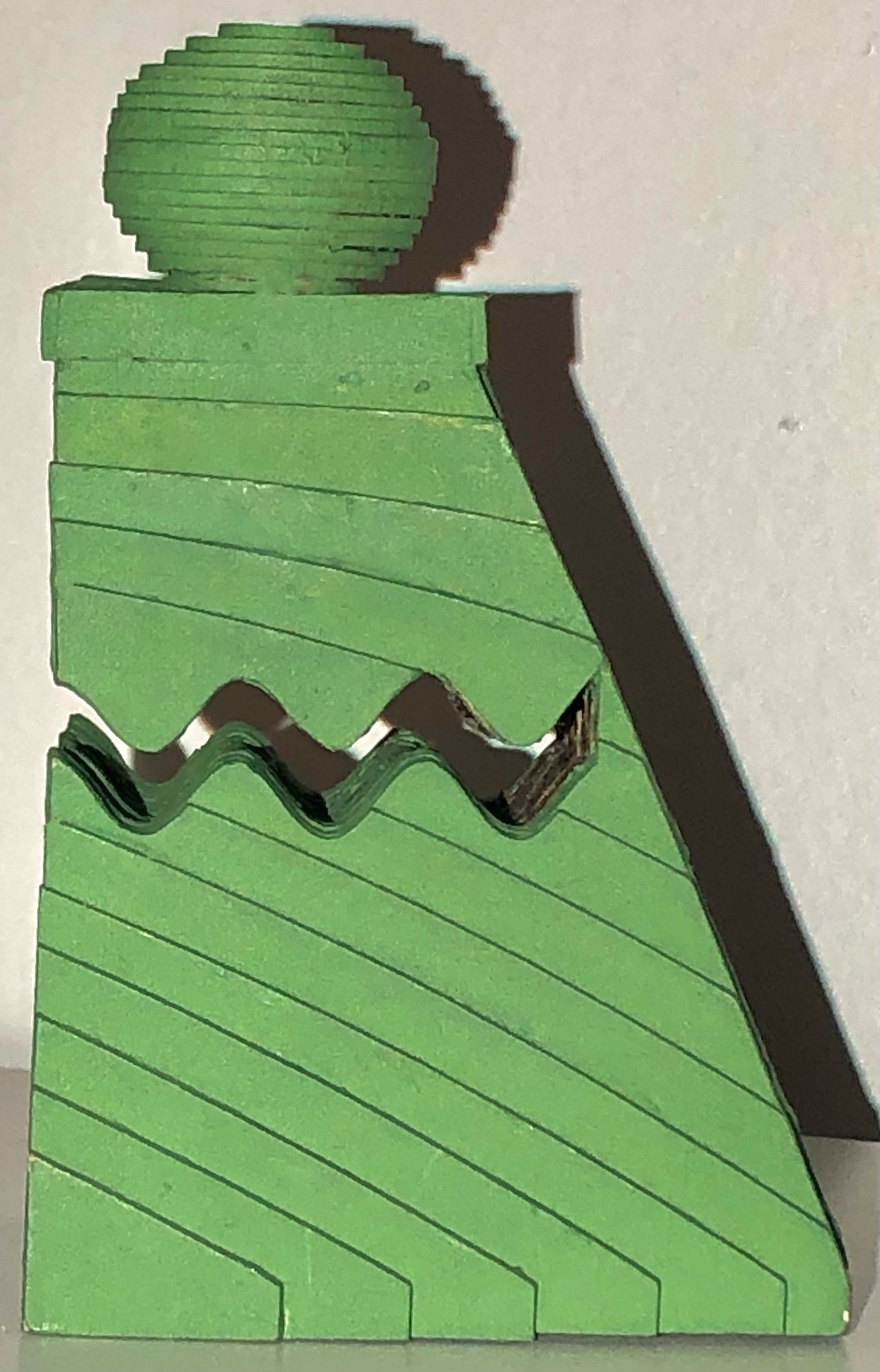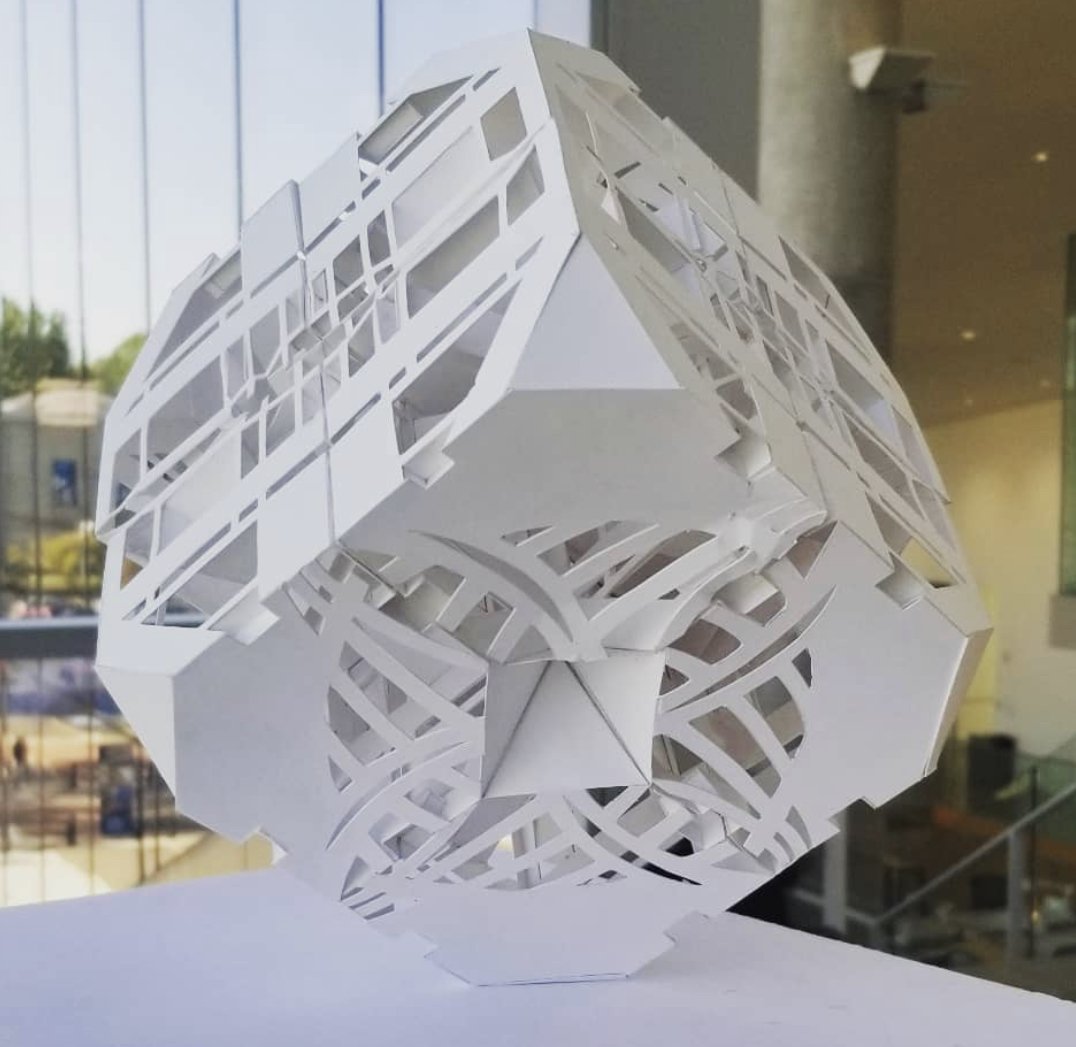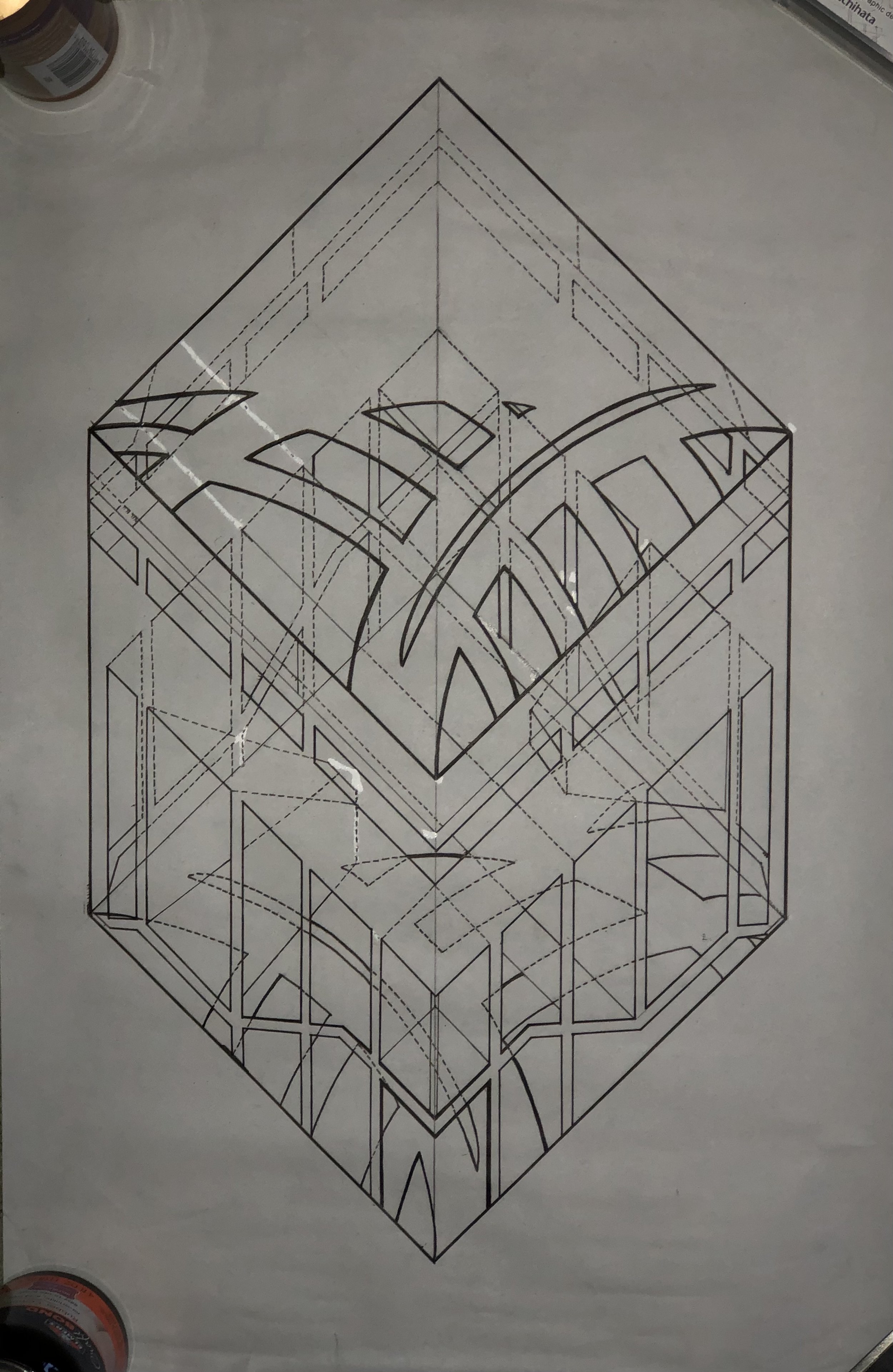ID Foundation Studio | Professor David Thal
Our studio’s culminating project focused on conditions of interiority and spatial contrasts through a series/sequence of investigative constructs.
The project included a component of research (We found that there were, as a result of Marcel Duchamp’s championing of the game as art in the 1940s, many artists who used chess as a theme in art and how chess has been part of the culture and popular culture for many centuries); the development of a concept/narrative and program of actions/interactions; the diagramming of movement; and the investigation of resultant interior spatial conditions which supports/translates/amplifies the students’ narrative.
Previous projects were referenced: Color Interaction (2D/3D translations); Color Contrasts (color/contrast of hue, contrast of saturation, warm/cool); and Compositions (color transparency and mixing); Texture and Materiality (textural contrasts/variation), to incorporate and complement the students’ quality of their interiority and spatial conditions.
Our “site” was a portion of the students’ originally designed chessboard and its’ “occupants” were the uniquely designed chess pieces. The exploration of conditions of interiority and spatiality “program” was influenced by the study of the mappings and interactions between three chosen chess pieces and the expression of their narrative.
Nicole Warnement
Confrontation
Throughout the game of chess, the two players interact with each other through confrontation. Not only do those players endure confrontation, but the pieces on the board experience it between each other. I wanted my set to represent the confrontation that occurs throughout the game.
I built my pieces and board to represent the confrontation that all experience. I chose to construct my pieces by incorporating edges, skewed foundations, and points of interaction. I chose blue to fill my board and my pieces due to the characteristics that are represented by this color. I built my final model to represent the theme of confrontation, the constructed set I made, and my narrative behind the pieces’ movement. I learned about the importance of the elements of color, spatiality, and cohesiveness through the projects leading up to this.


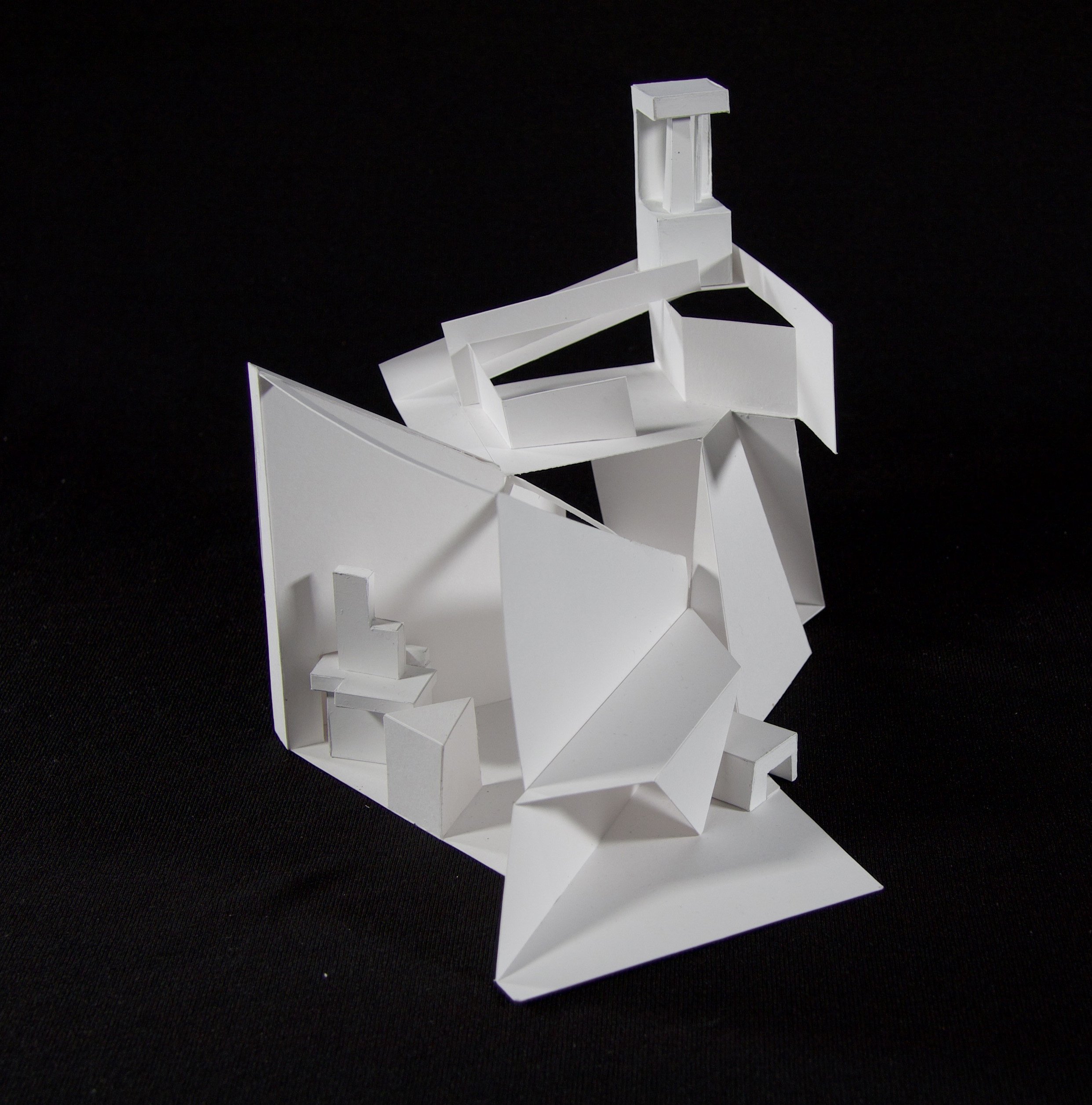
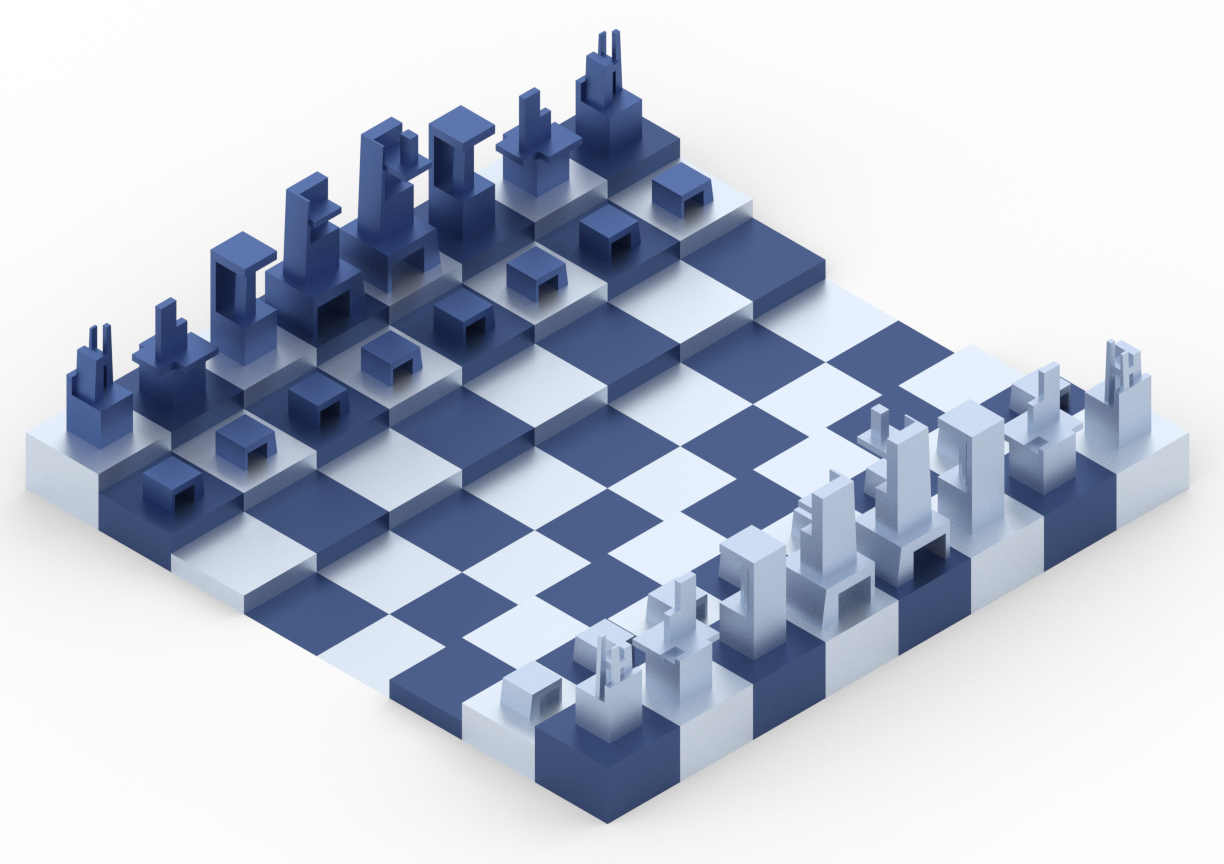
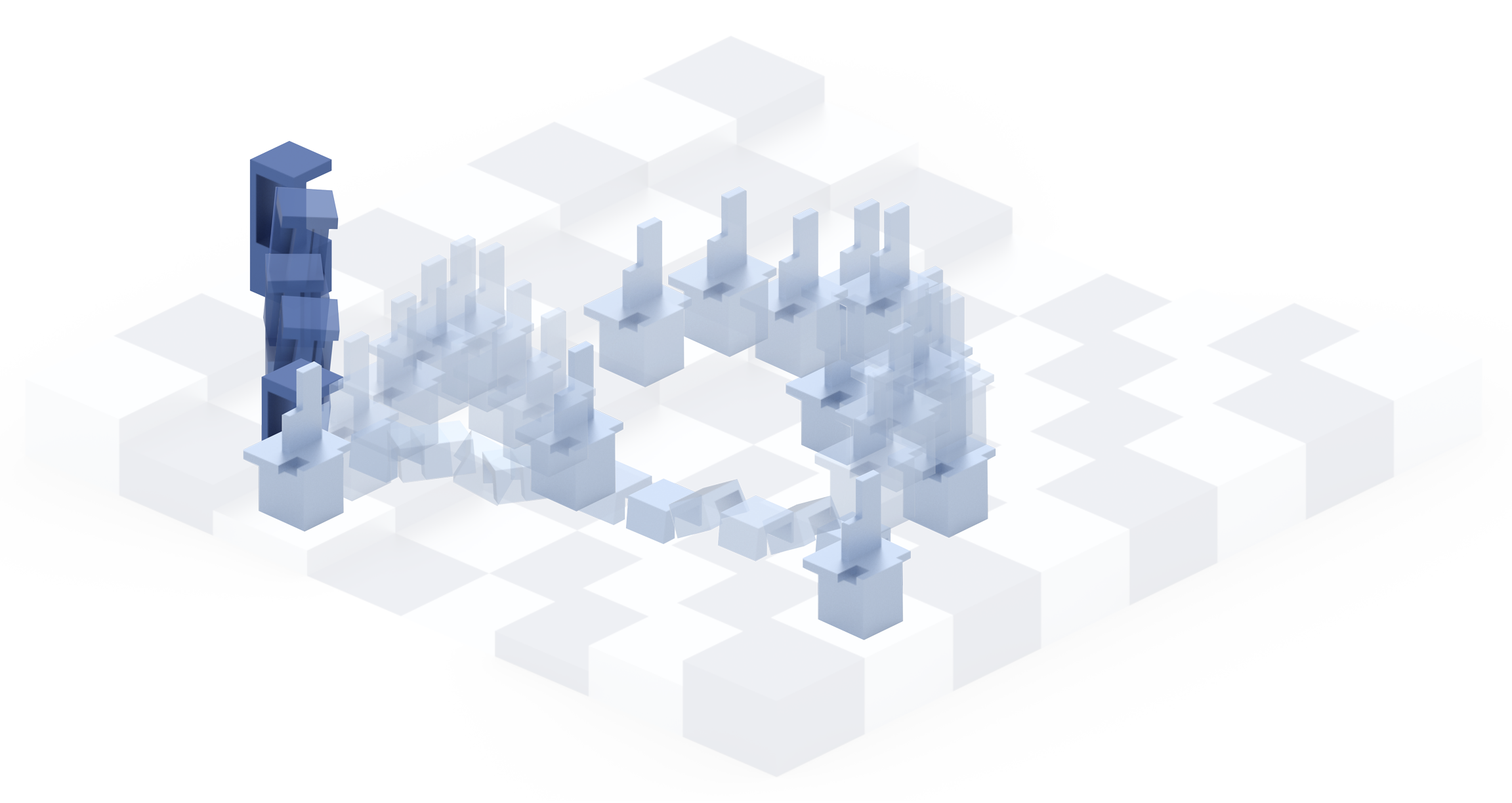


Samantha Nielsen
Status
From the start of this project, I was influenced by chess history, more specifically the legends with it. One legend was about a wise man that made a game for a king to show how important everyone in his kingdom was. I used that and the influence of status to create my project. While creating my chess pieces and board, I wanted every piece to contain the same elements, just different configurations to show different statuses and the importance of every piece. For my movements of pieces, I showed how there’s an overlap of many movements to win a game and not a few specific ones, which was also my inspiration for creating my final model. My past projects leading up to my final project that focused on axonometric drawings, texture, and color interaction all had a major influence on what I created during my final project.
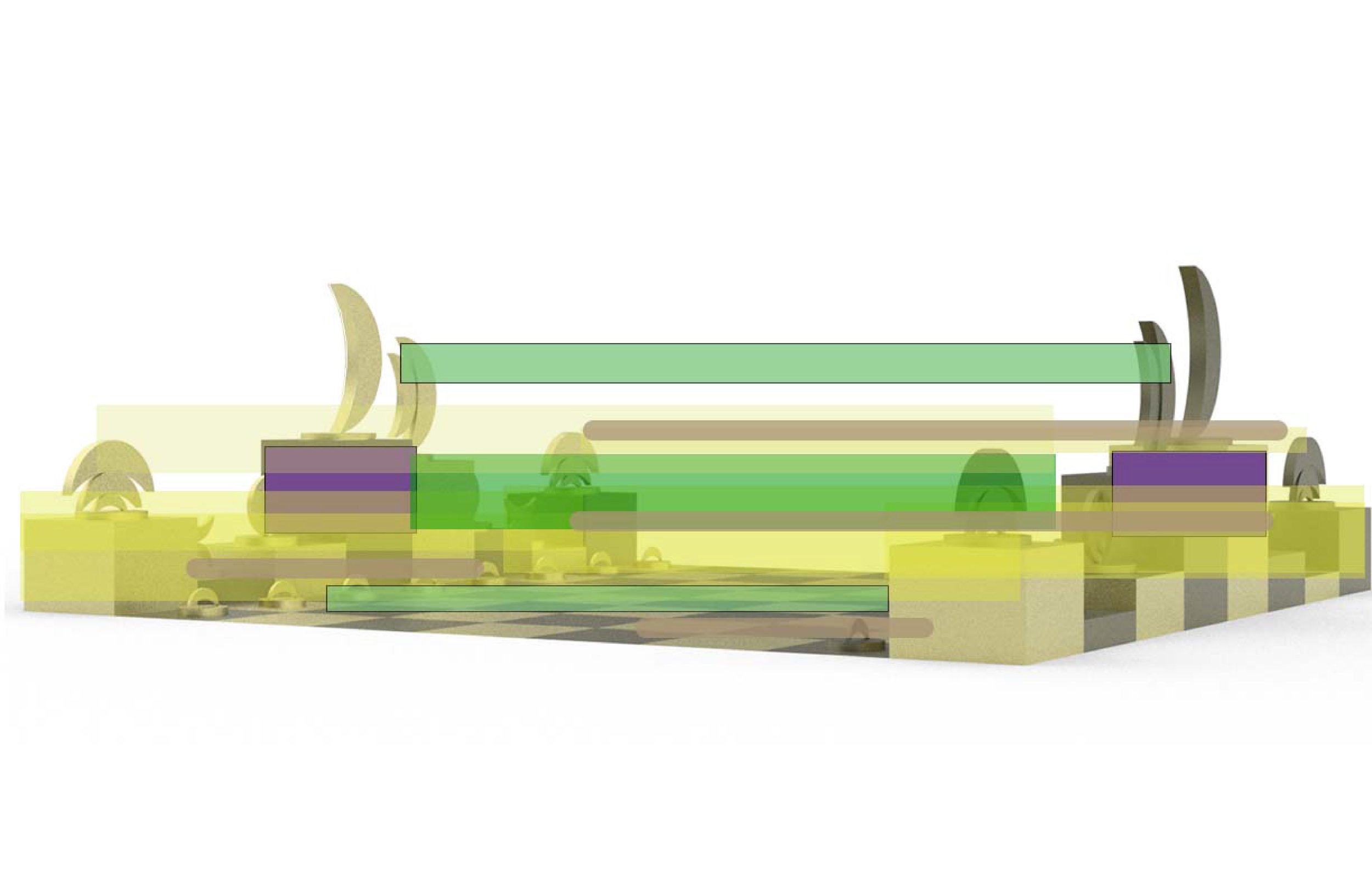

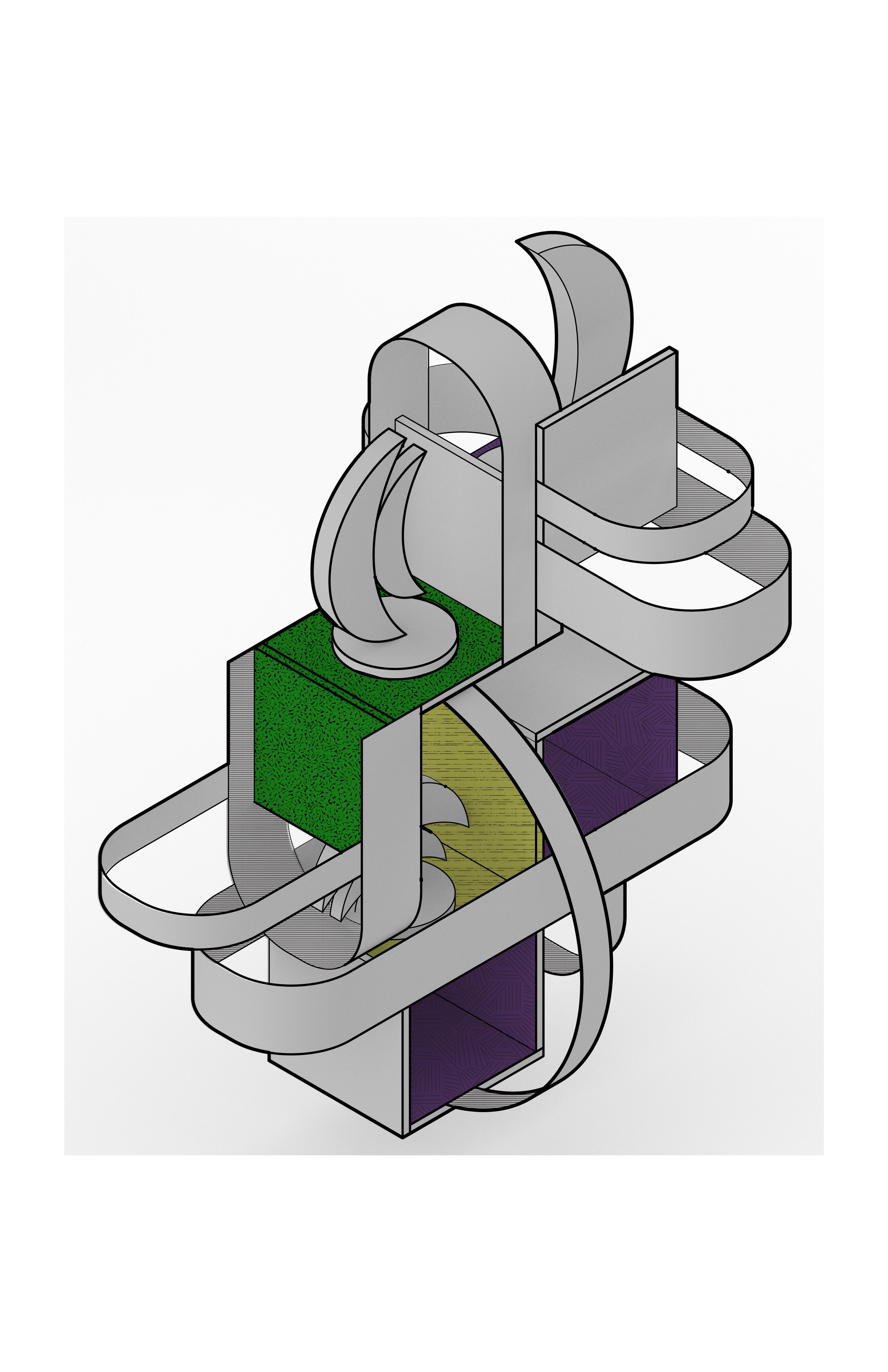
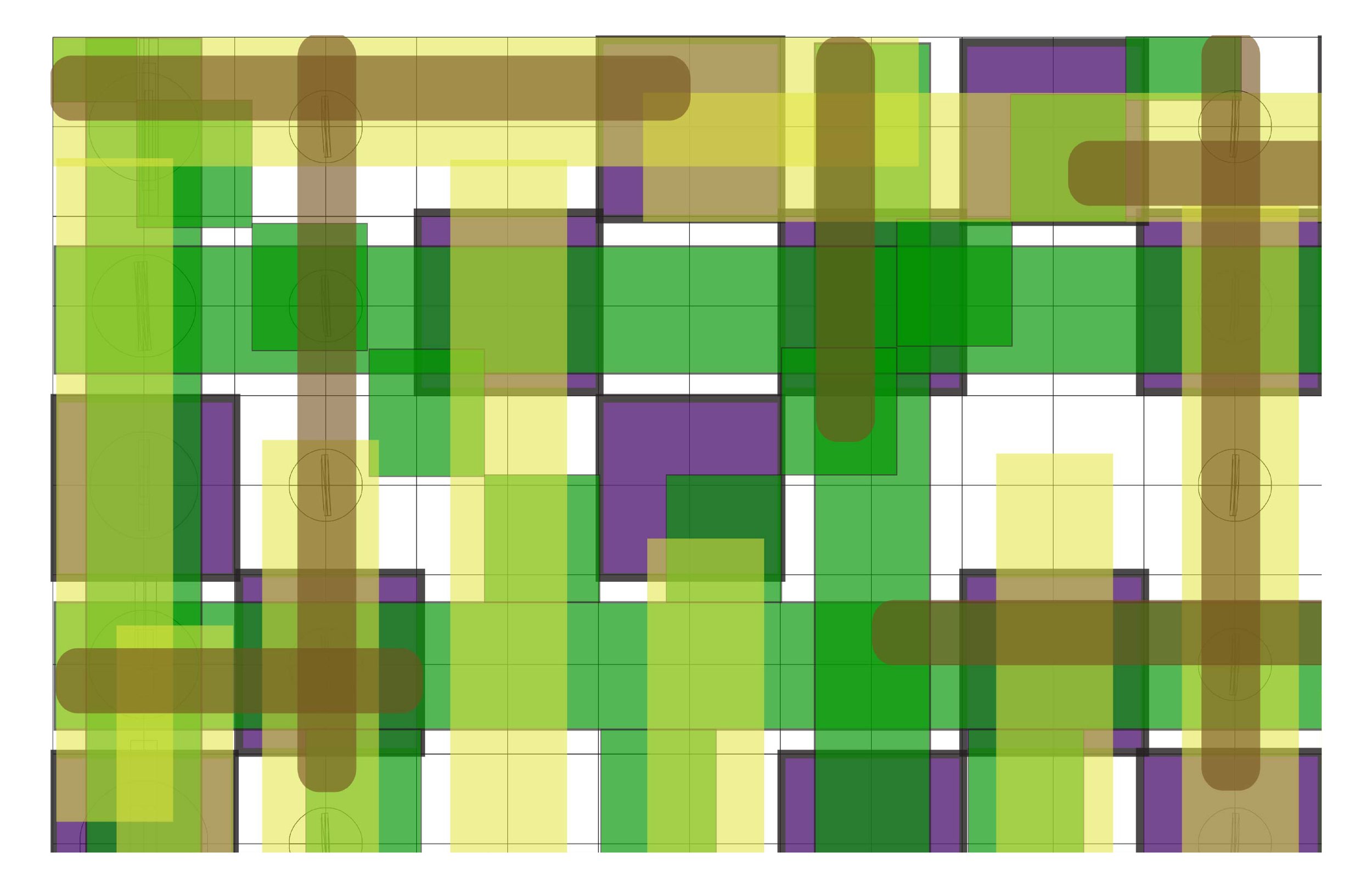
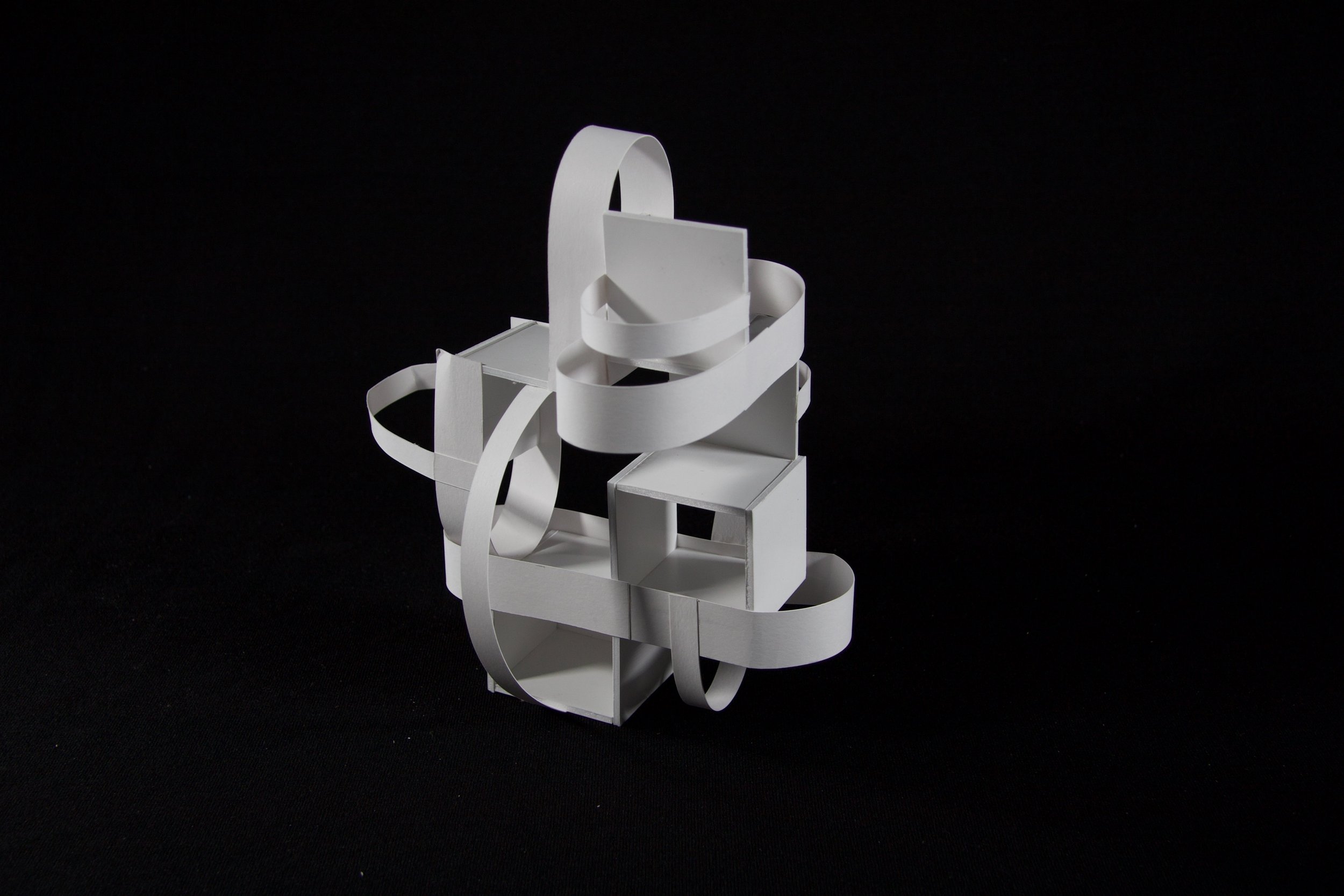
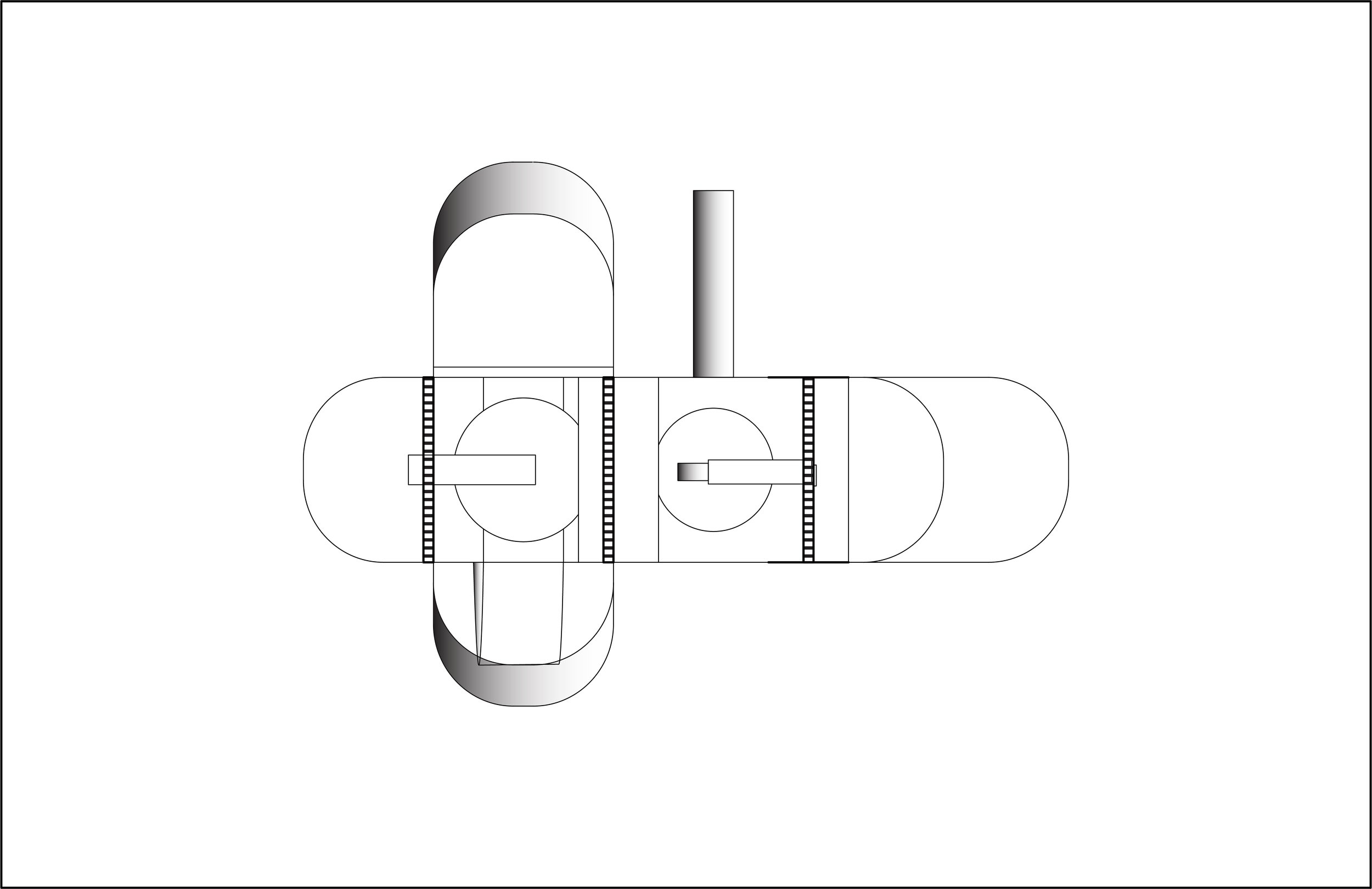
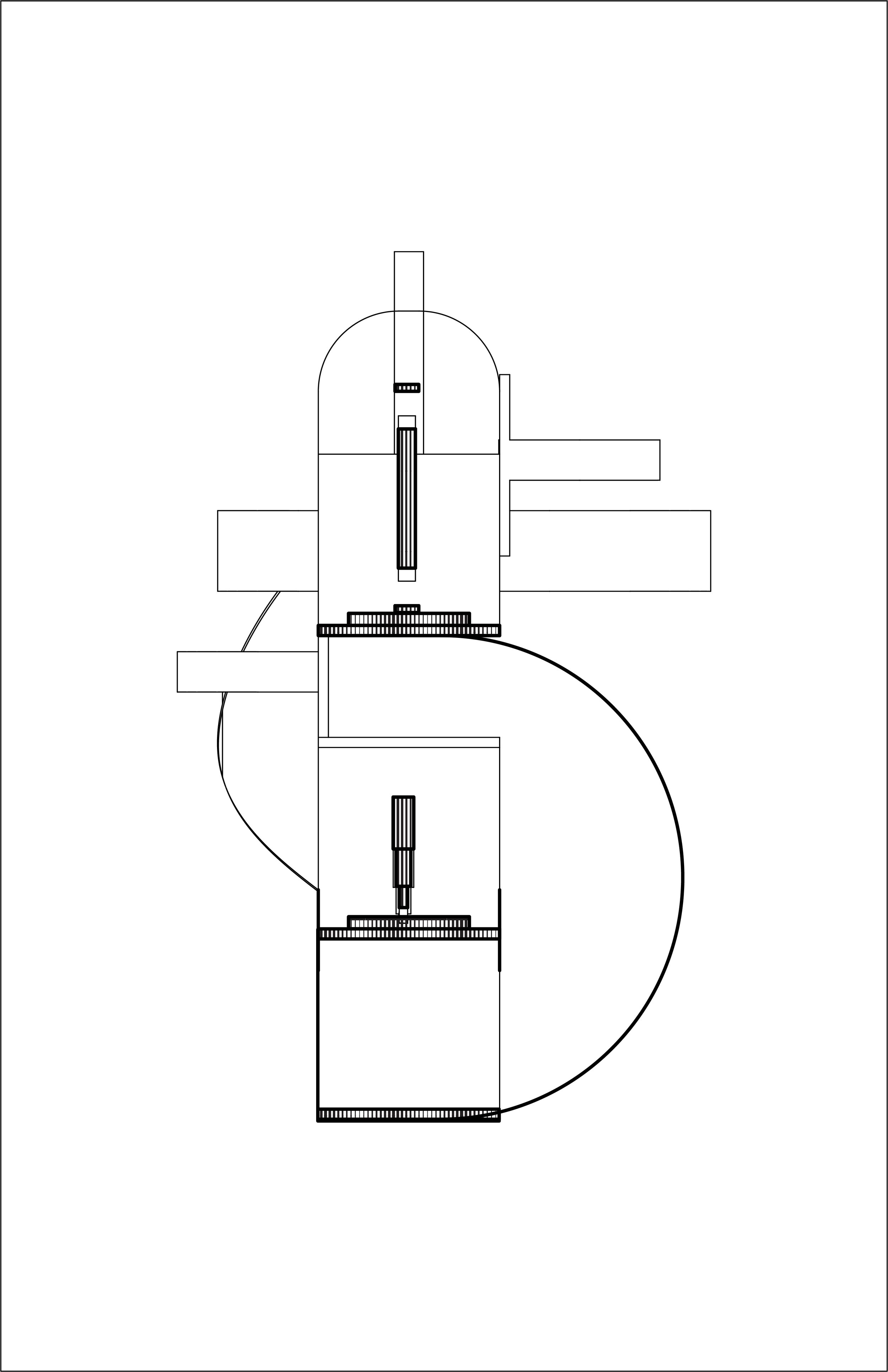
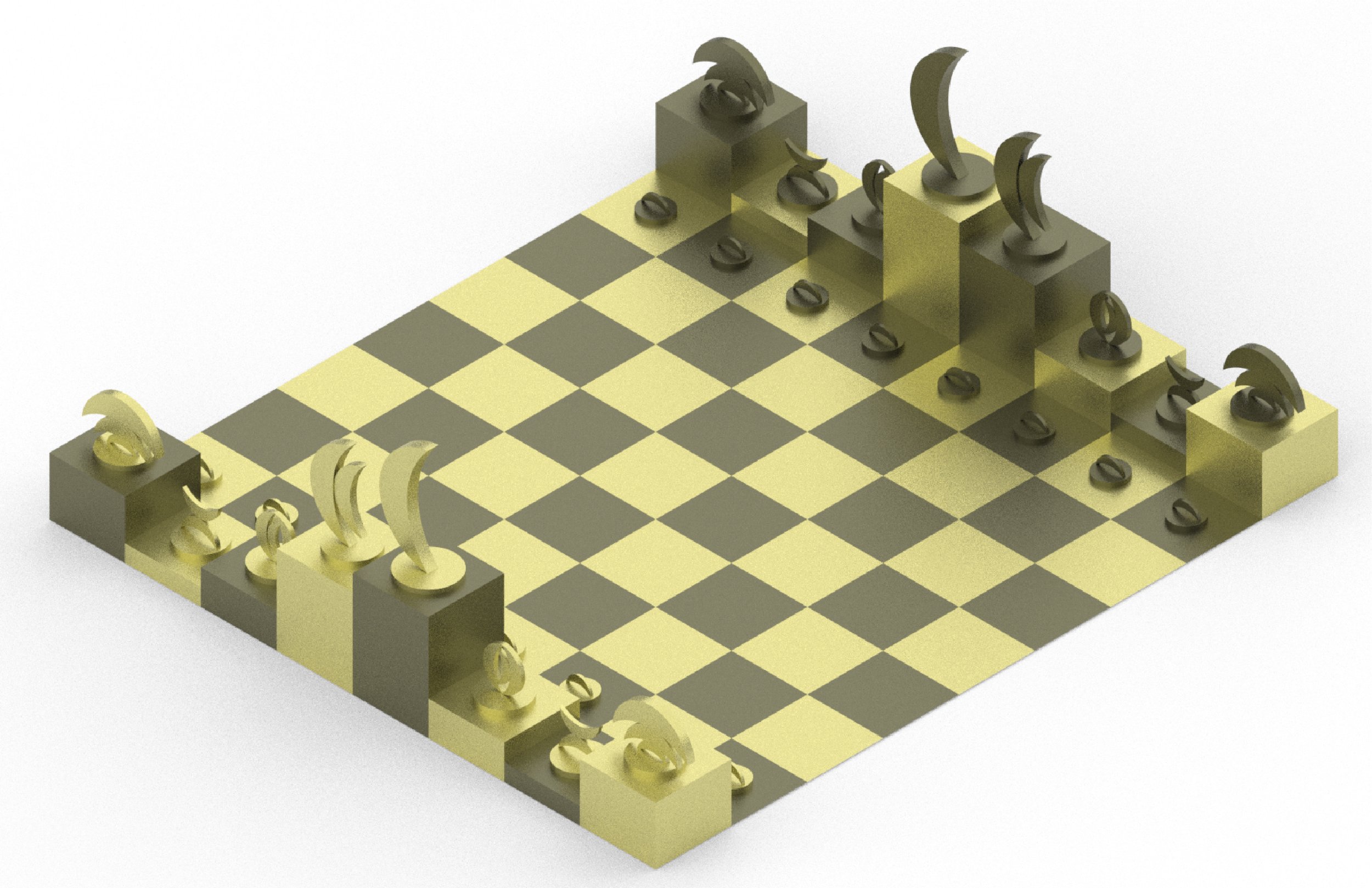
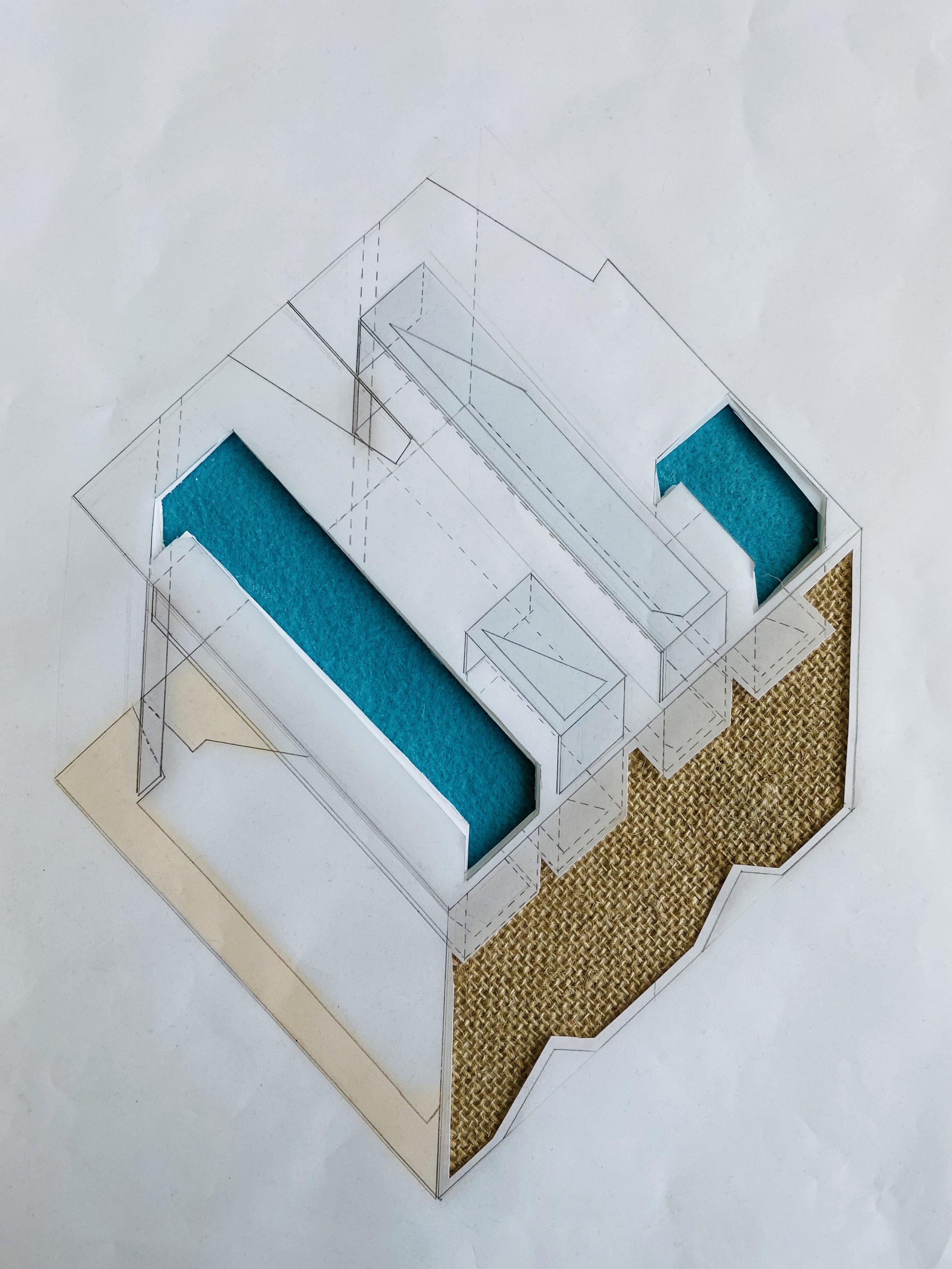
Rylee Pohlman
Defensive
Chess was a game played to reenact battles and strategies of war. Taking that into consideration, the word “Defensive” was a good basis for my project describing the game of chess. My pieces represent a nation’s fighting forces defending their leader in battle. The two pieces on top consist of the opponent's Pawn (Army) battling against the Queen (Air Force) that’s defending its own King (leader). The open space on top represents the vastness of a battlefield. The semi-enclosed space that the King resides in represents its protection as well as its vulnerability to attacks. Throughout the semester, I’ve learned how to three dimensionalize space in different ways as well as how to apply color theory which is a key part of my chess project. In this model’s orthographic drawings, the pop of red conveys the tension, action, danger, and aggression evoked through real battles.
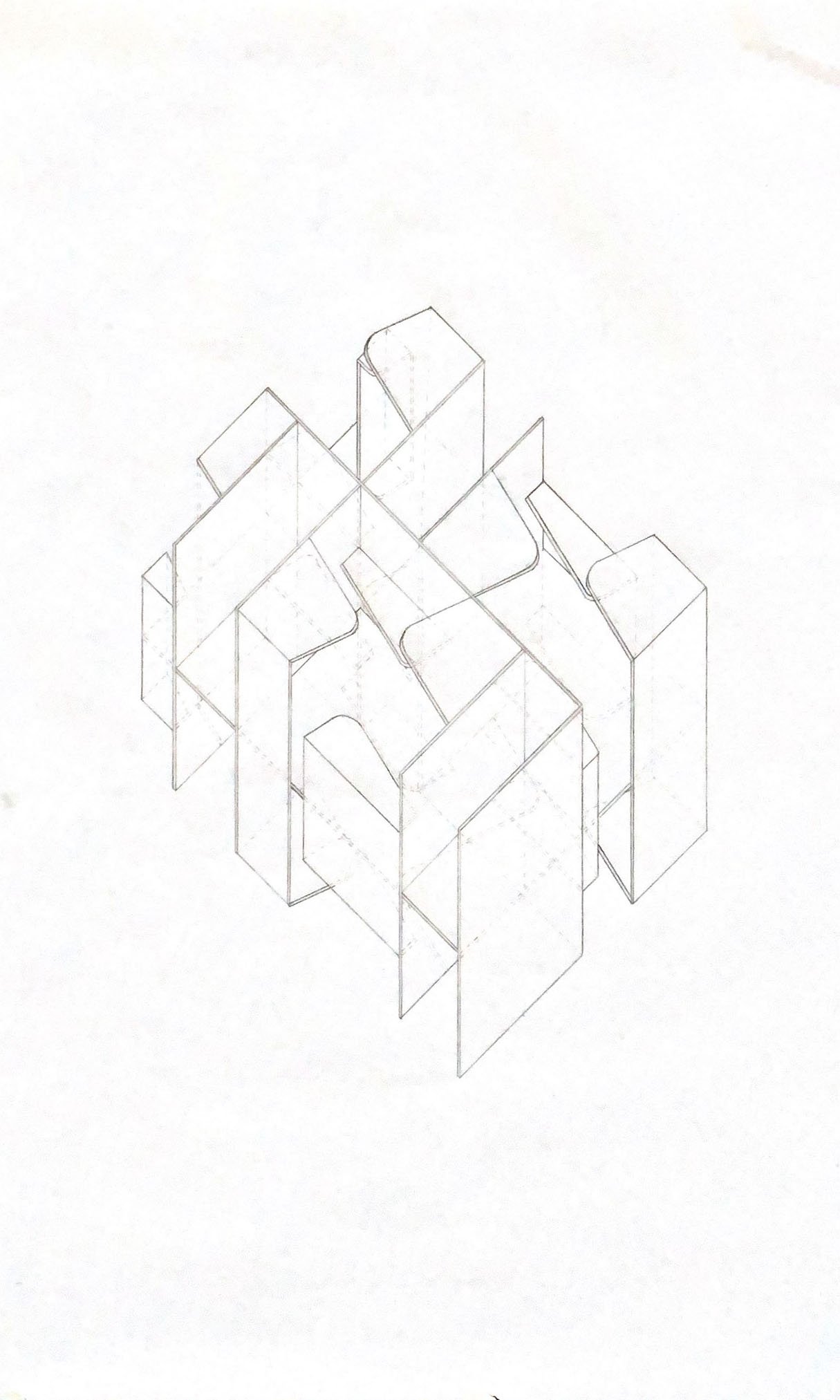
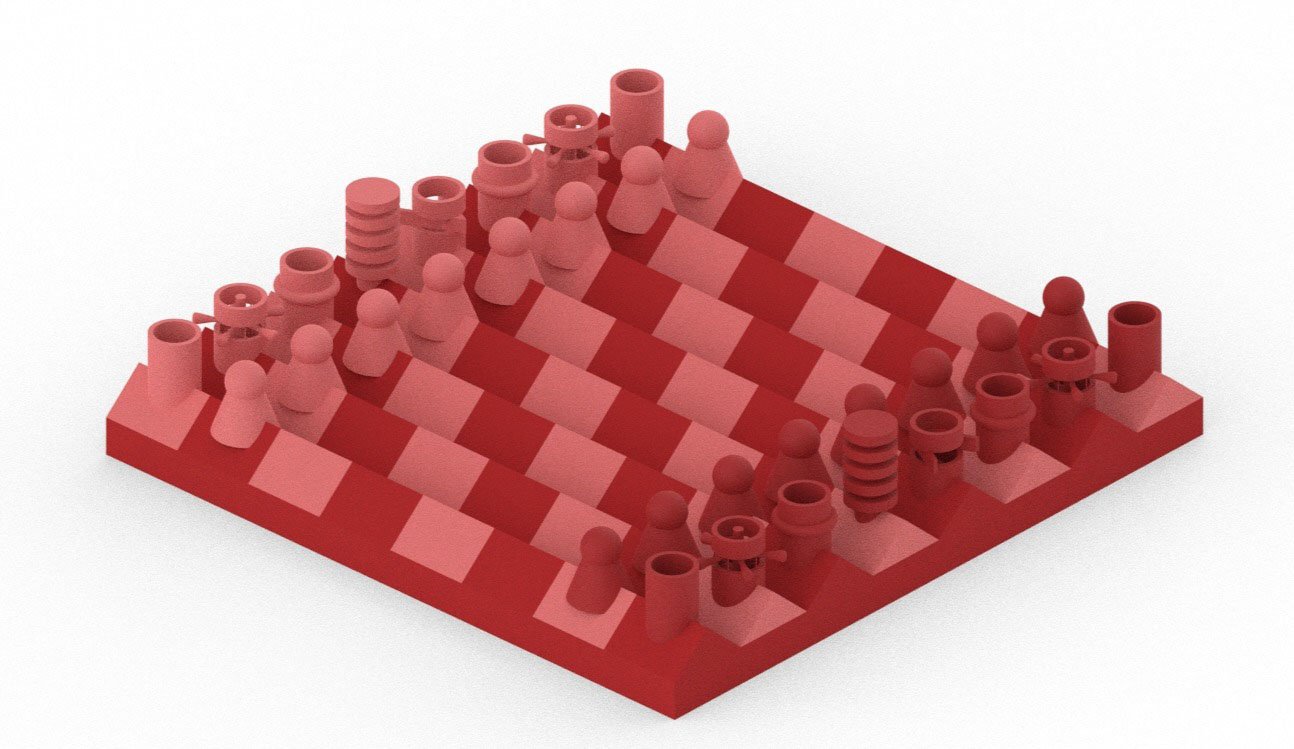
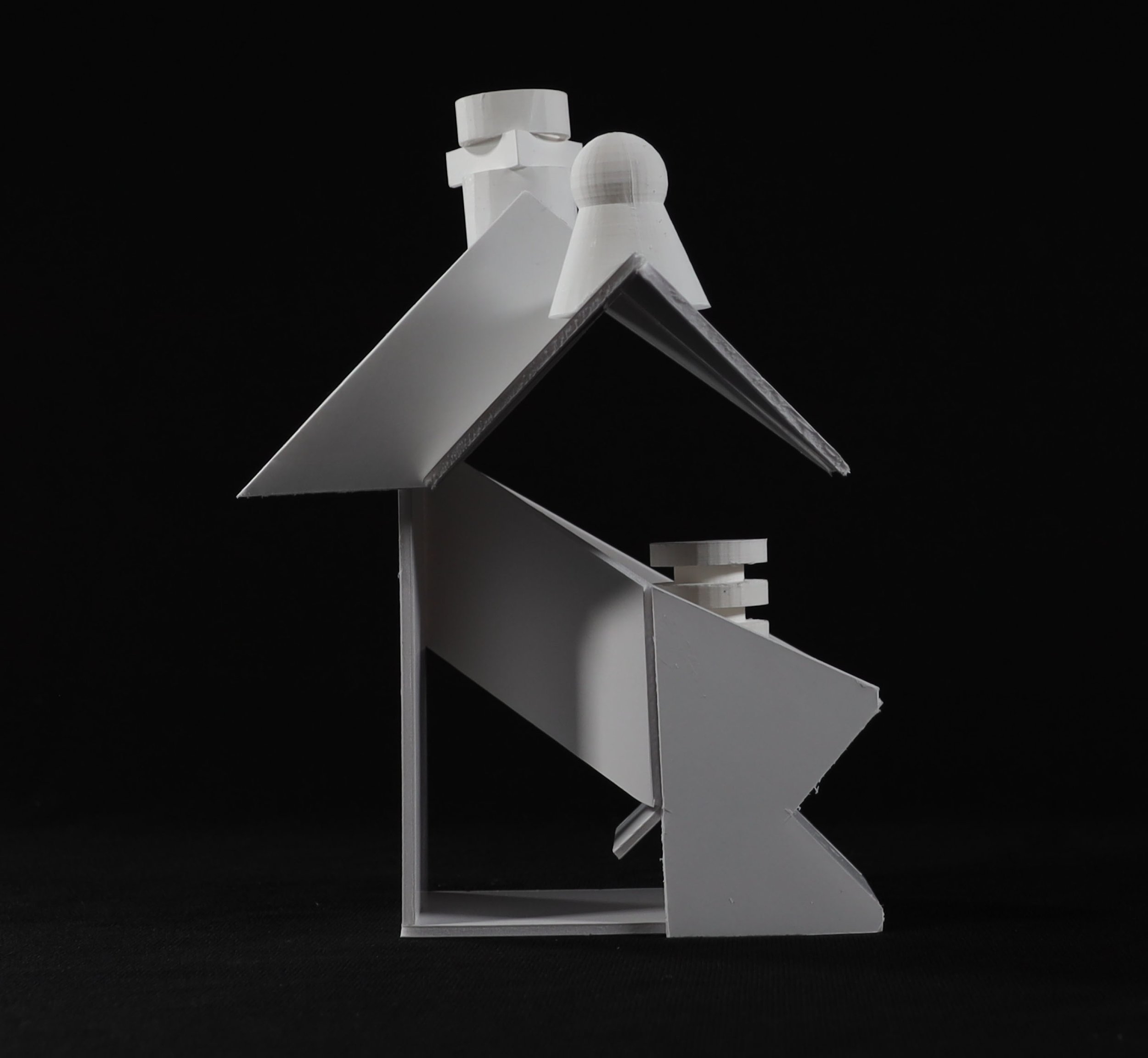


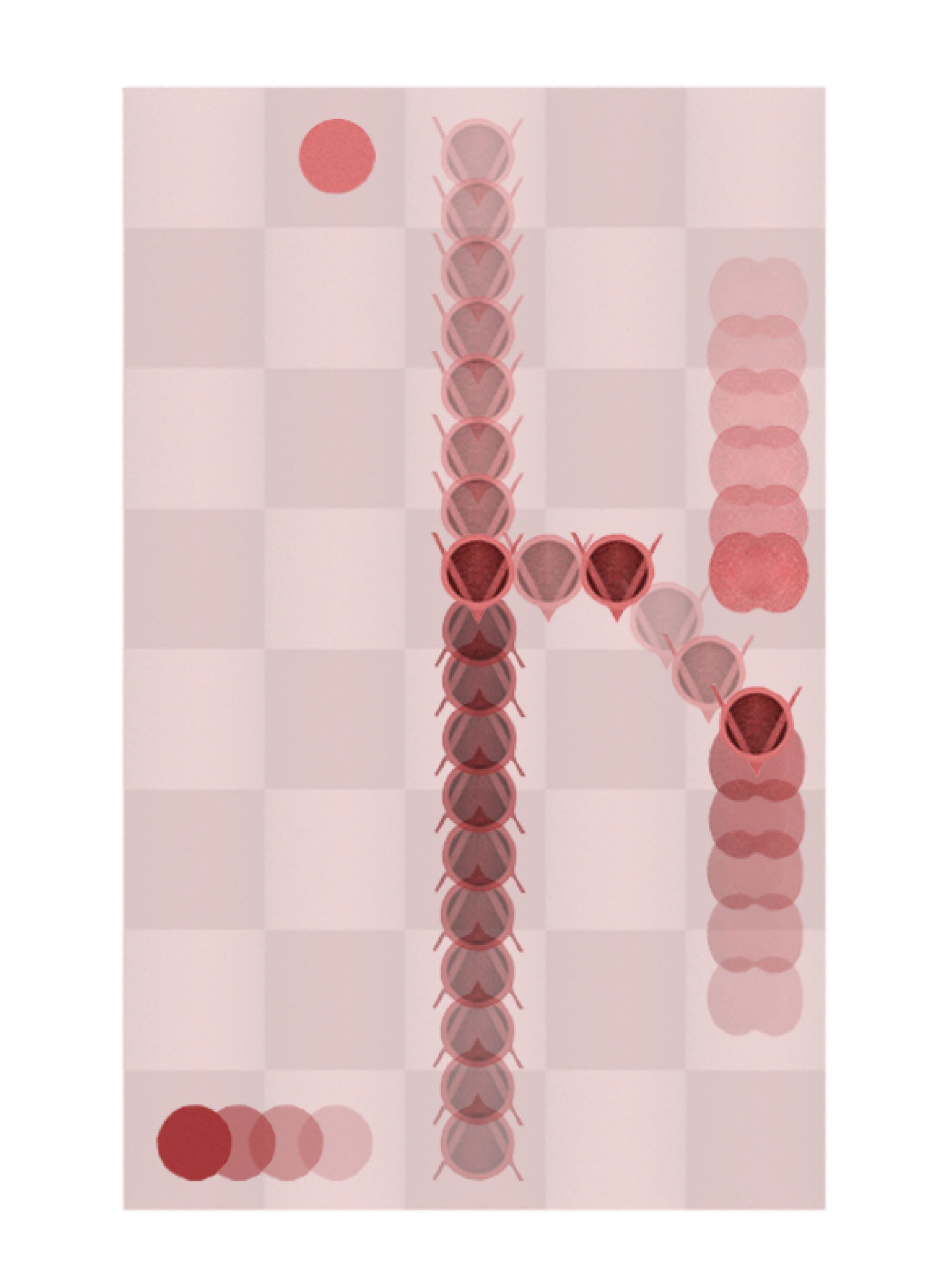
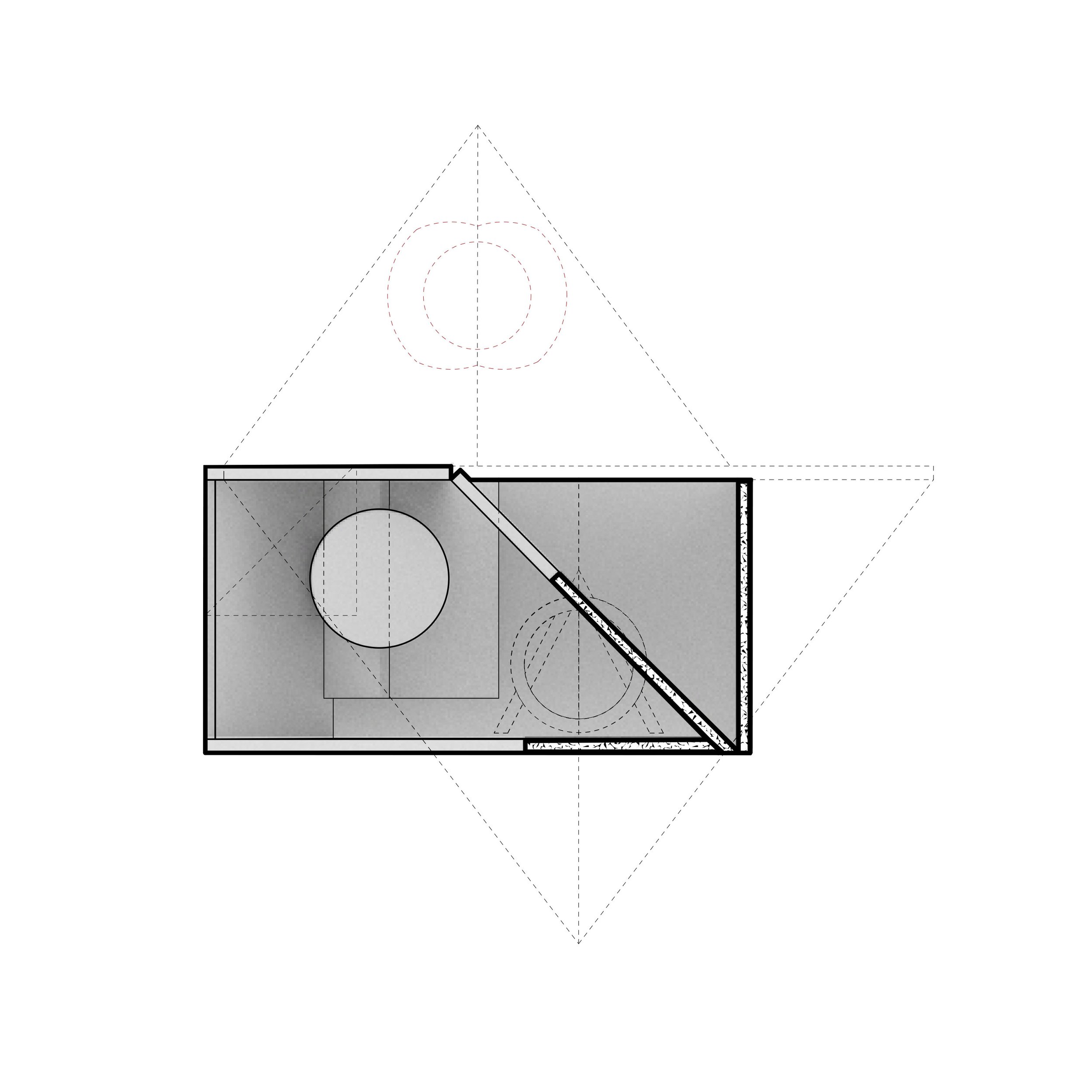
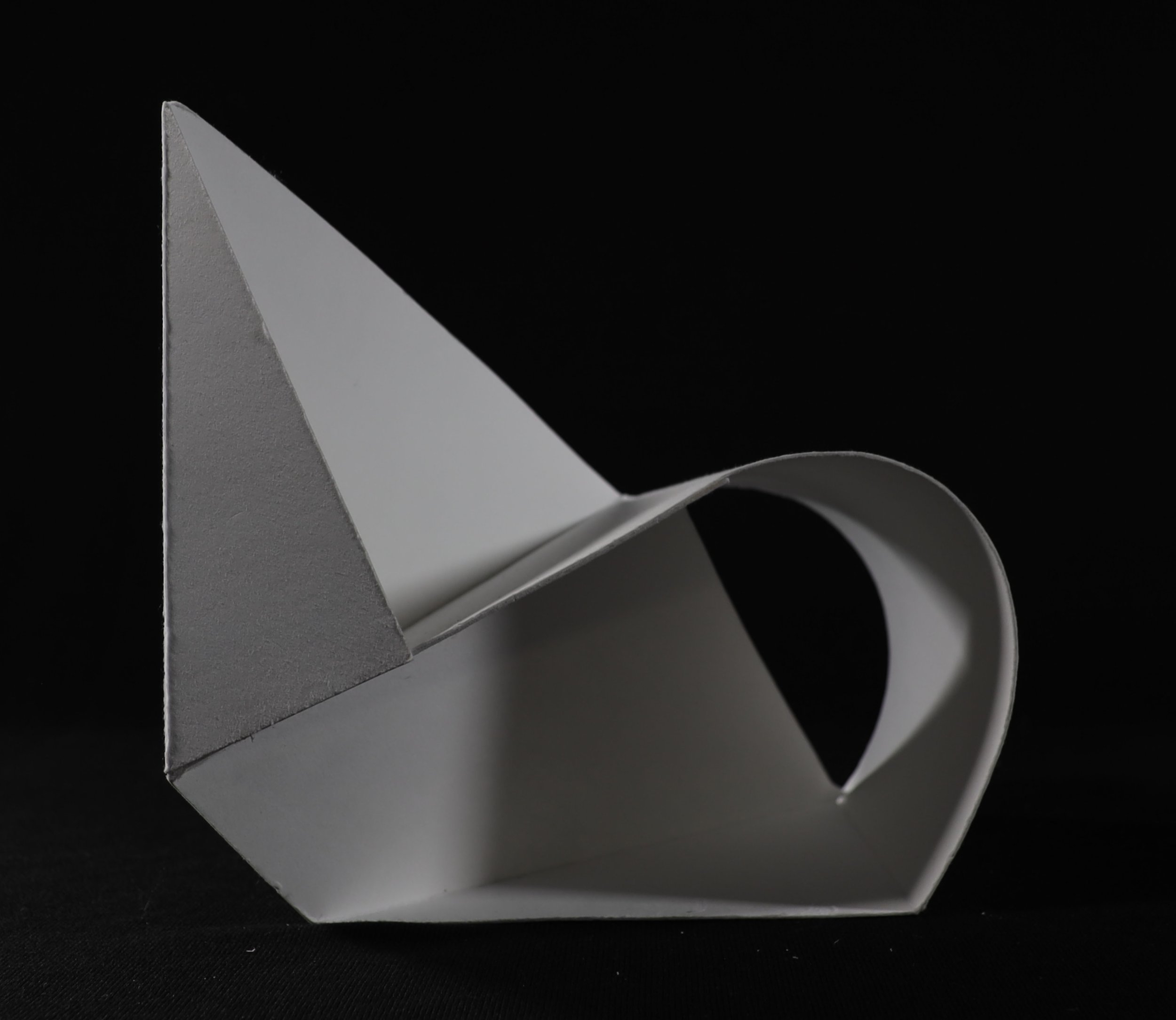
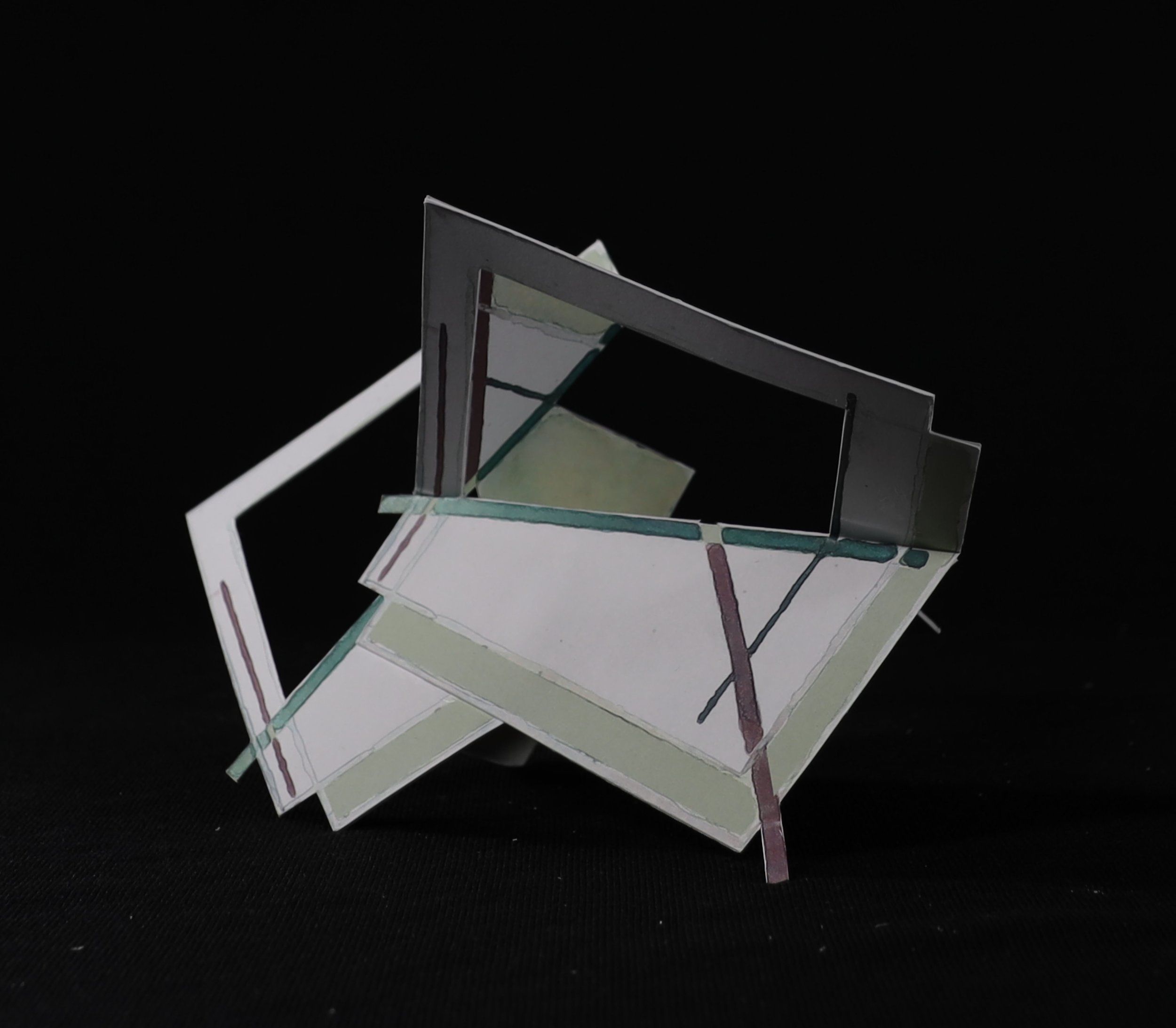
Chess Design | Professor Stephanie Johnson
ID Foundations Studio is an introduction to design fundamentals including principles of visual organization and composition in both two-dimensions and three-dimensions. The course is oriented to foundational design principles shared between various allied design disciplines including architecture, fashion, and visual communication design. Special emphasis is placed on design fundamentals especially relevant to interior design. The course introduces two-dimensional and three-dimensional hand craft and digital skills.
Specific content of the studio included visual organizational, including formal compositional principles; an application of representational conventions in building design and basic drawing techniques including sketching and freehand drawing, orthographic projection, isometric and parallel projection, diagramming, and three-dimensional modeling techniques; acquiring of hand craft in drawing and modeling and well as the application of digital techniques that include software applications used in interior design; applying design thinking to studio problems including conceptualizing, developing design solutions, understanding techniques of iteration and revision, responding to design criticism from others, and evolving a sense of personal creative autonomy and self-criticism.
The studio completed four exercises:
Design principles in 2D & 3D
Pattern & texture
Color & color relationships
Placemaking for chess pieces
Jessica Groll
Personifying, Programing, and Placemaking for Chess Pieces
We had to create an interior for chess pieces that goes along with our narrative. My narrative followed a birthday party with drama. I attached three interiors with each tier getting higher to represent time passing within the narrative. The lowest platform was the beginning. There is a wall down the center to portray that Knight and Bishop come close but never meet. The Bishop was keeping an eye on Knight. The middle section represents Knight and Rook interacting. There is an archway in the center representing a doorway as Knight kicks Rook out of the party. The triangle in front of the door mimics their attempt at privacy; although, you can clearly see past the triangle. The final interior represents Knight and Bishop’s interactions. Bishop stands tall on the top tier to represent that Bishop is the last piece standing once Knight leaves the party.

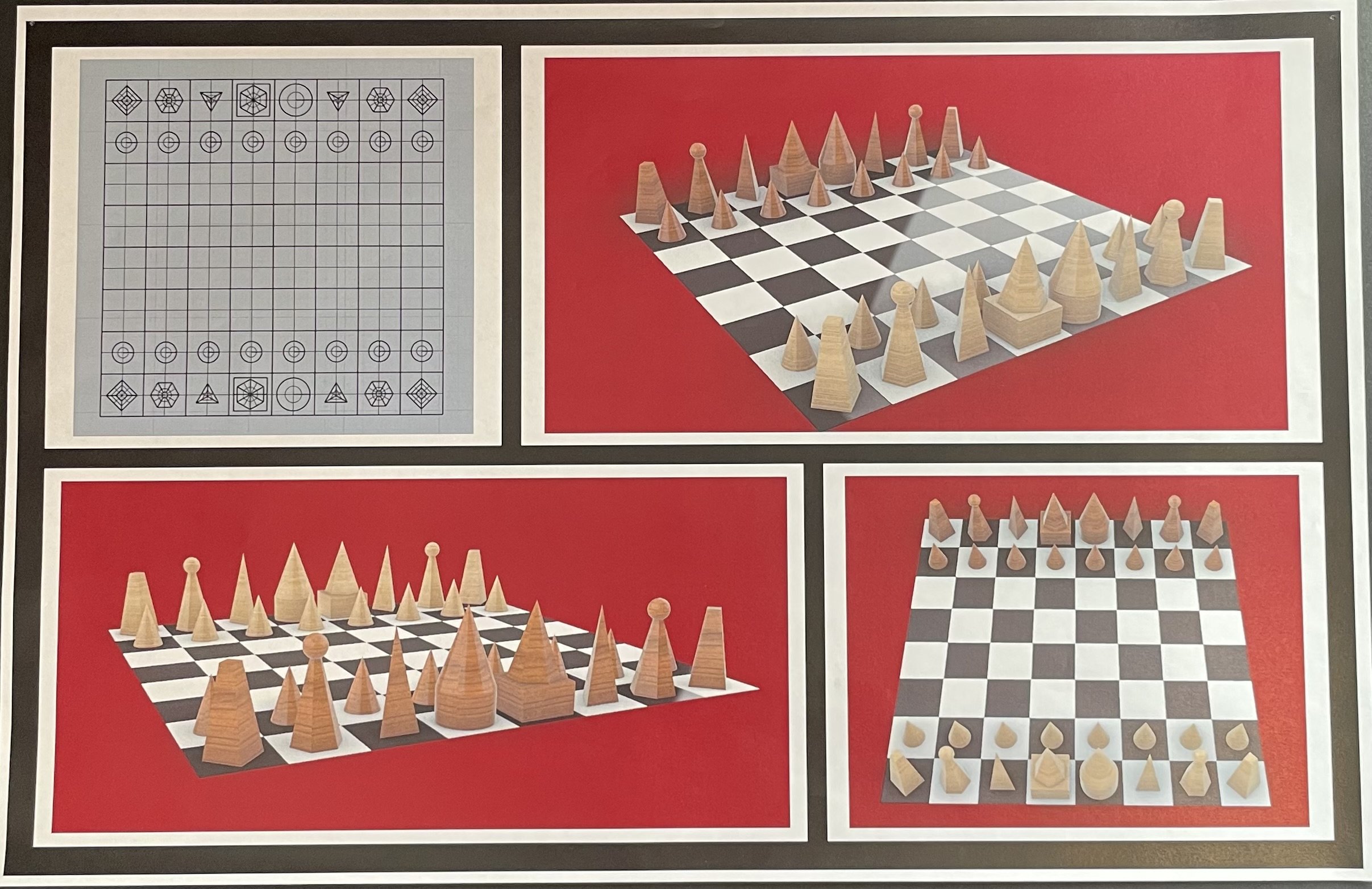
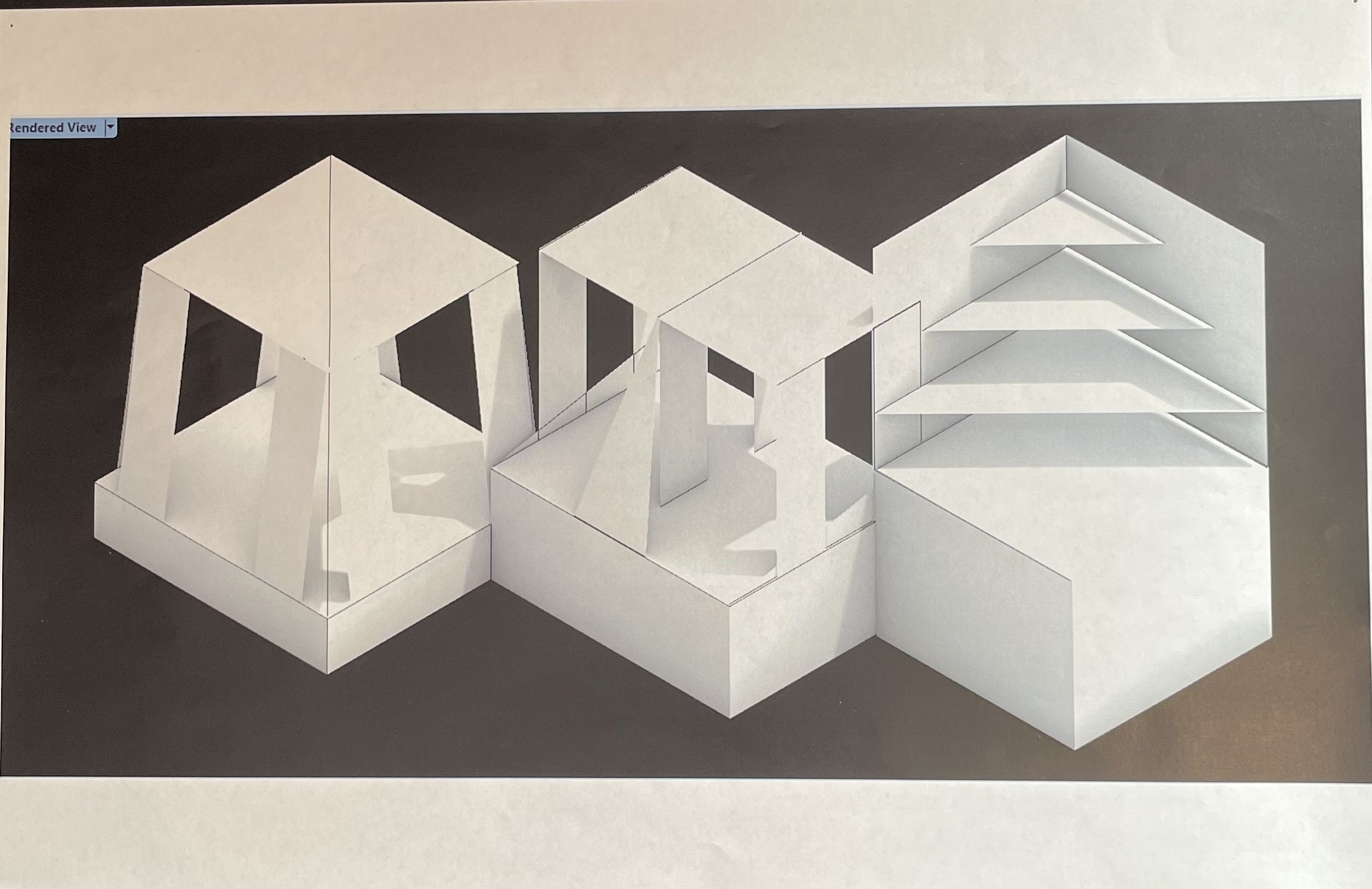

Karli Goellner
Chess Design
This semester was an amazing experience and I thrilled for the rest to come.
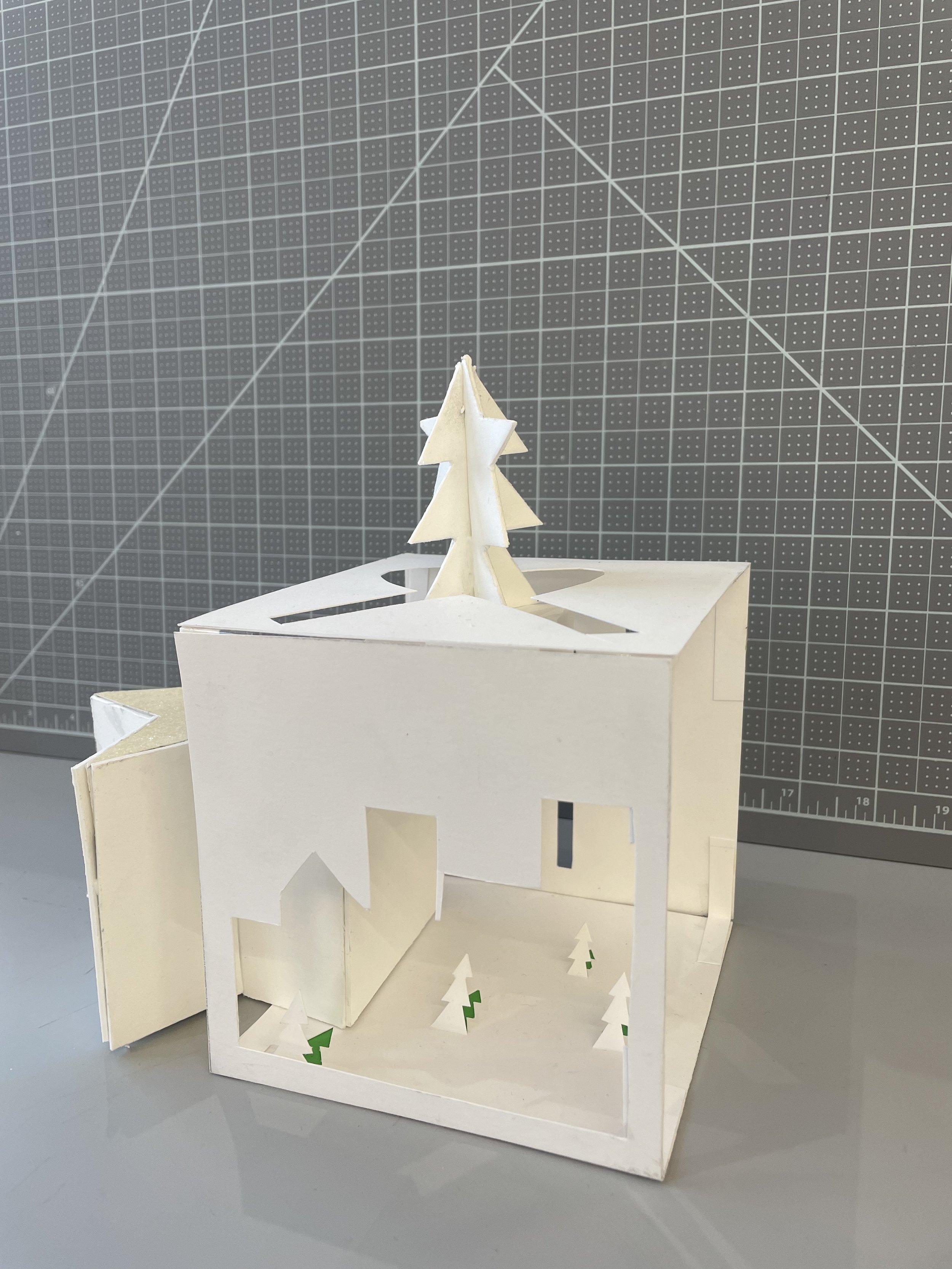
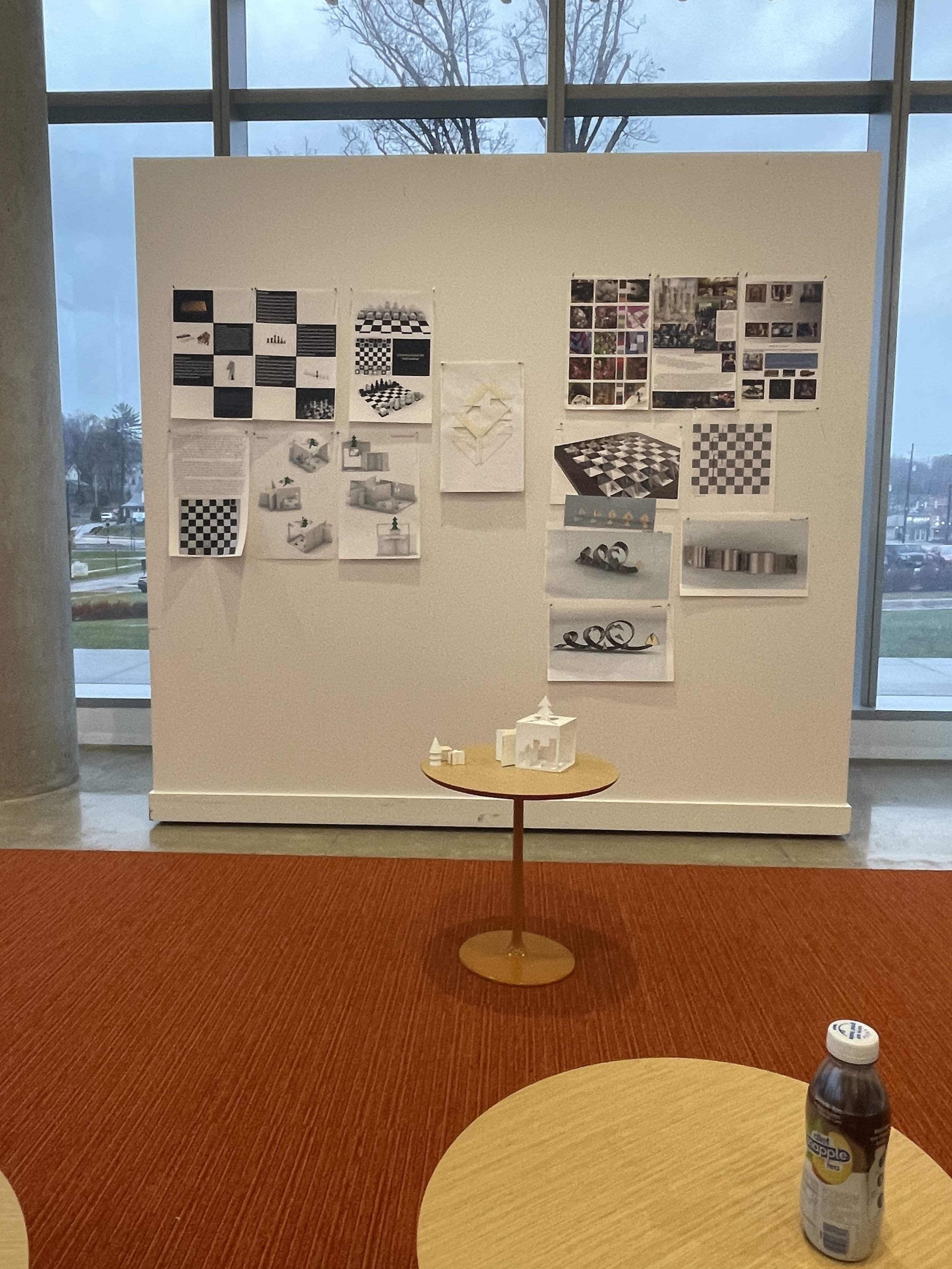
ID Foundation Studio| Professor Ronn Daniel
ID Foundations Studio is an introduction to design fundamentals including principles of visual organization and composition in both two-dimensions and three-dimensions. The course is oriented to foundational design principles shared between various allied design disciplines including architecture, fashion, and visual communication design. Special emphasis is placed on design fundamentals especially relevant to interior design. The course introduces two-dimensional and three-dimensional hand craft and digital skills. Specific content of the studio included visual organizational, including formal compositional principles; an application of representational conventions in building design and basic drawing techniques including sketching and freehand drawing, orthographic projection, isometric and parallel projection, diagramming, and three-dimensional modeling techniques; acquiring of hand craft in drawing and modeling and well as the application of digital techniques that include software applications used in interior design; applying design thinking to studio problems including conceptualizing, developing design solutions, understanding techniques of iteration and revision, responding to design criticism from others, and evolving a sense of personal creative autonomy and self-criticism.
The studio completed four exercises:
Design principles in 2D & 3D
Pattern & texture
Color & color relationships
Placemaking for chess pieces
Payge Adams
Design Foundations
My research was a focus upon the basics of design. I learned about color, textures, patterns, space, shapes, even photographs, and many more things along the way. I created models and discovered the techniques of how to use Photoshop, Illustrator, and Rhino 7. Along this process, I developed many skills that are helping create me into a strong future designer. I developed how to make two-dimensional and three-dimensional digital skills and hand models.
Many hours and dedication went into my projects and developments. Each project always had a root, a starting point and from there my developments grew. At the end of each project, I got to observe how much I had developed just over the short amount of time. Each project helps show off my skills while also showing that I have so much more to learn.

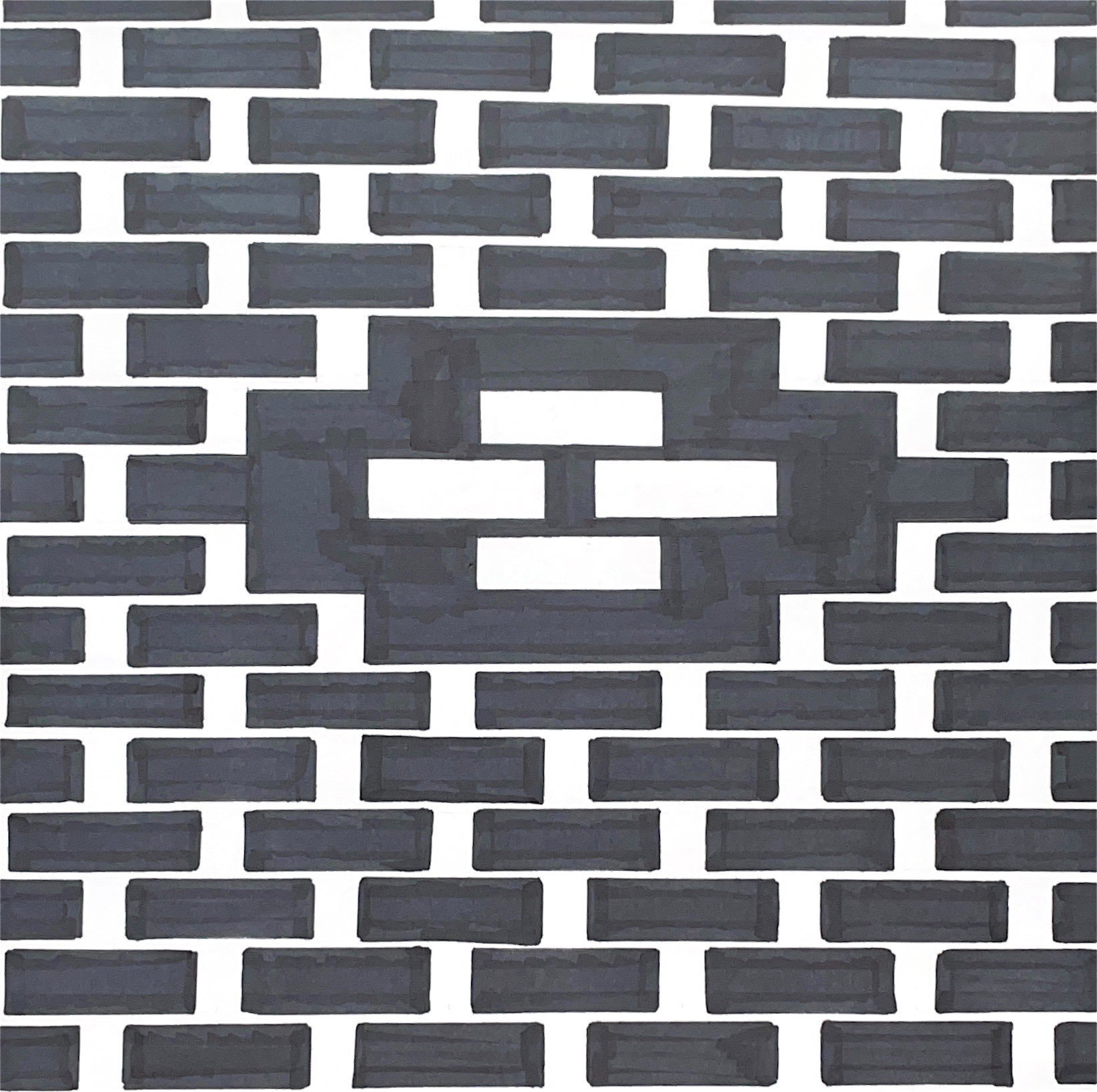
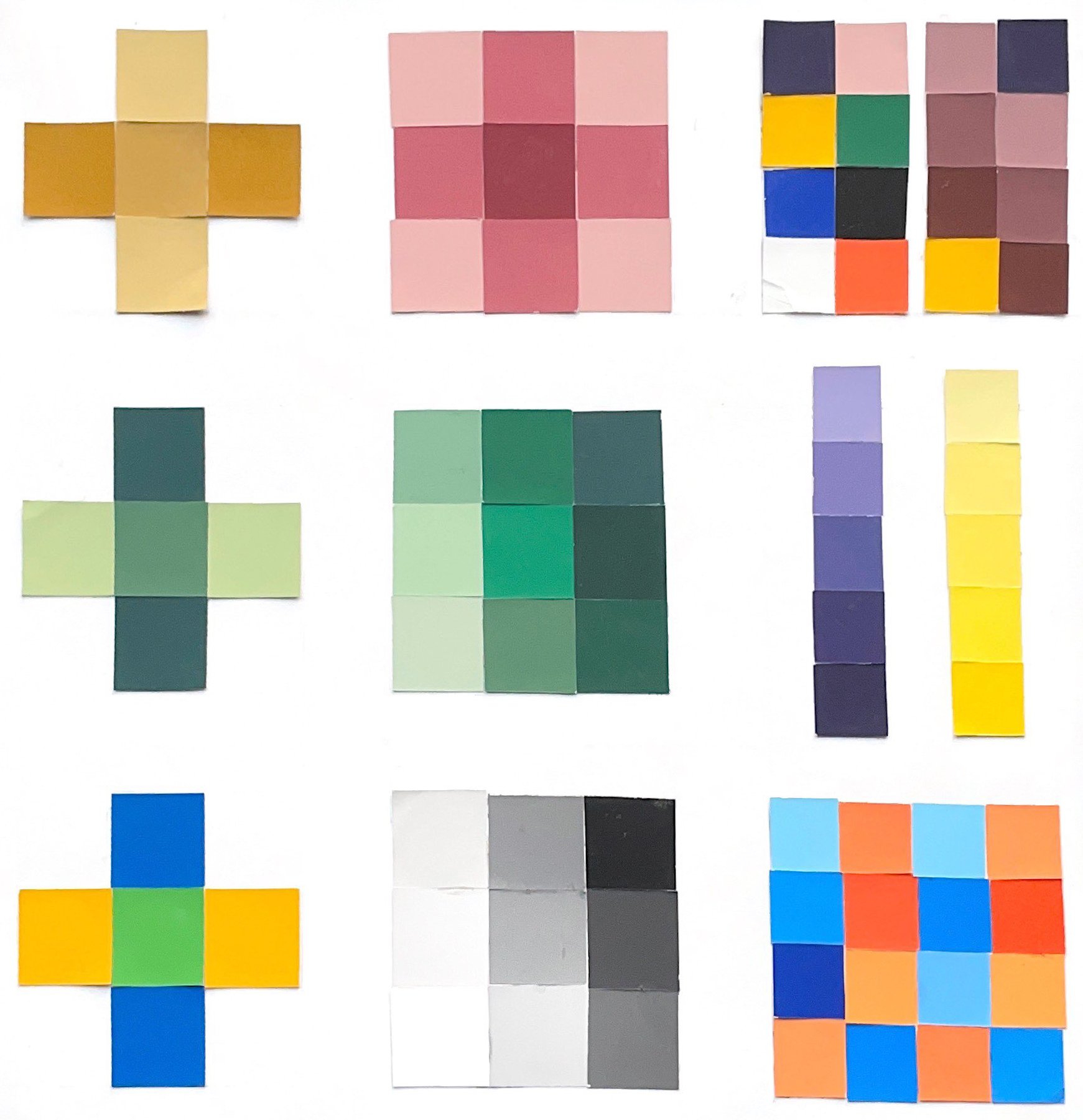
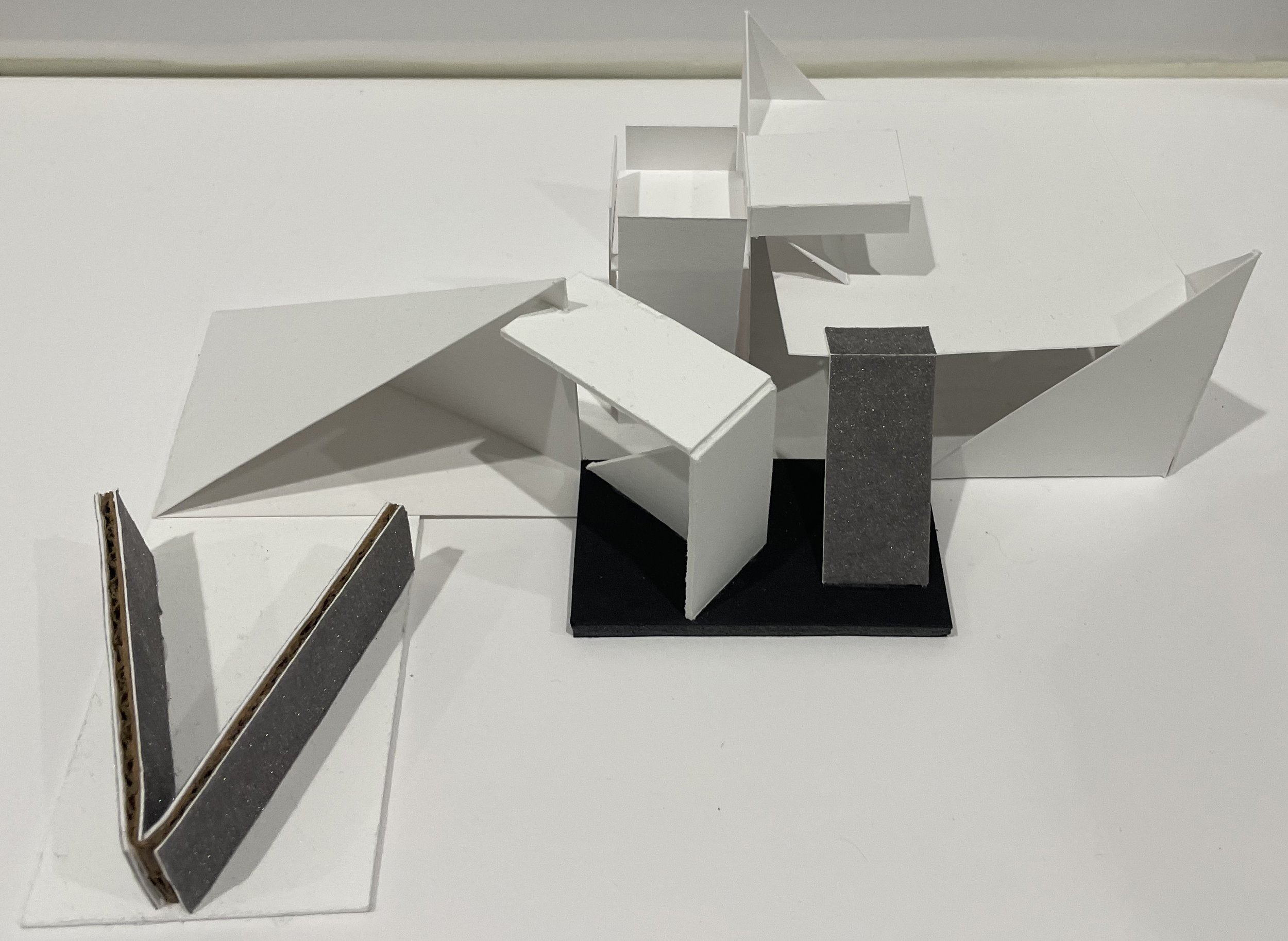

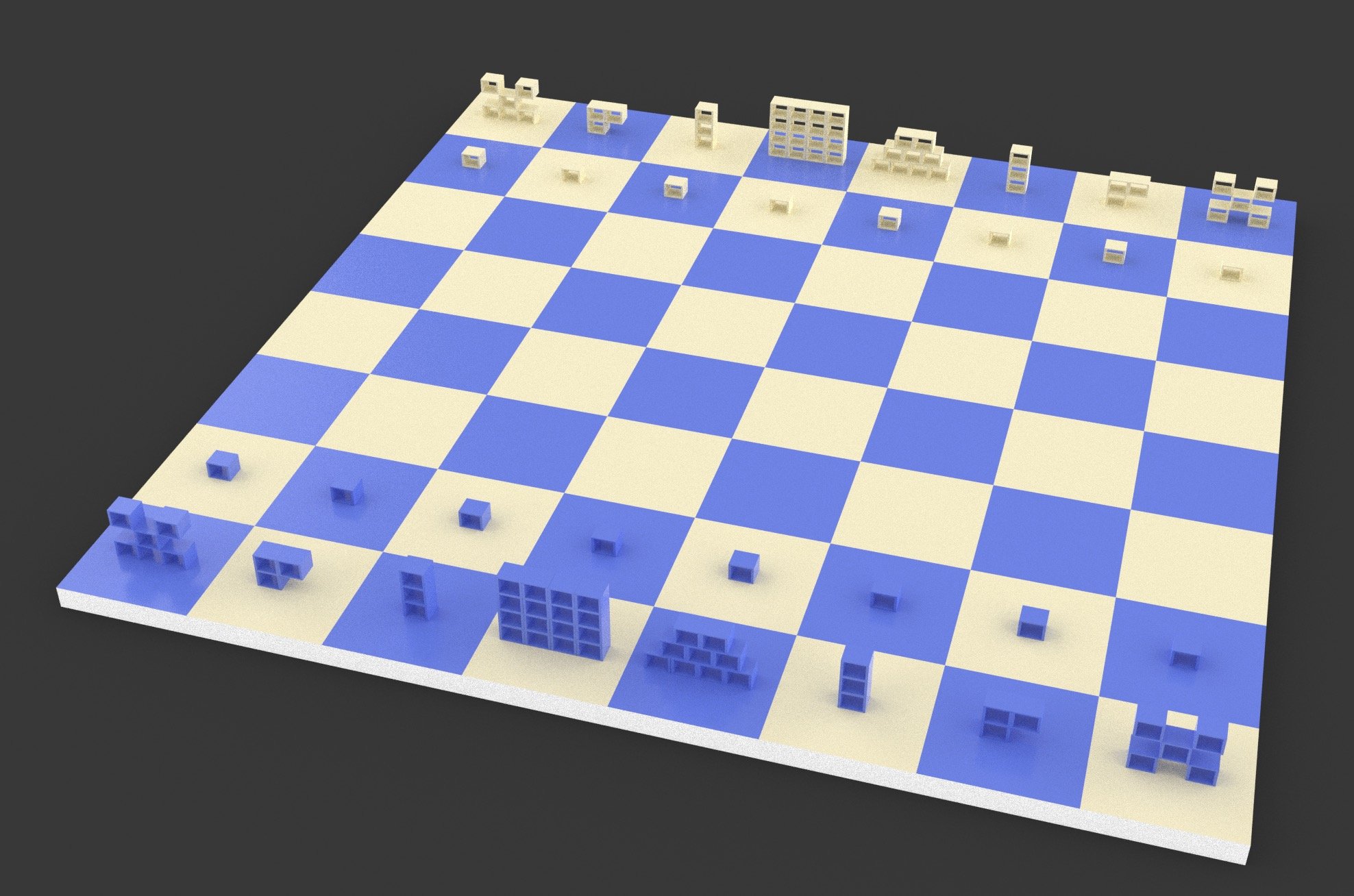
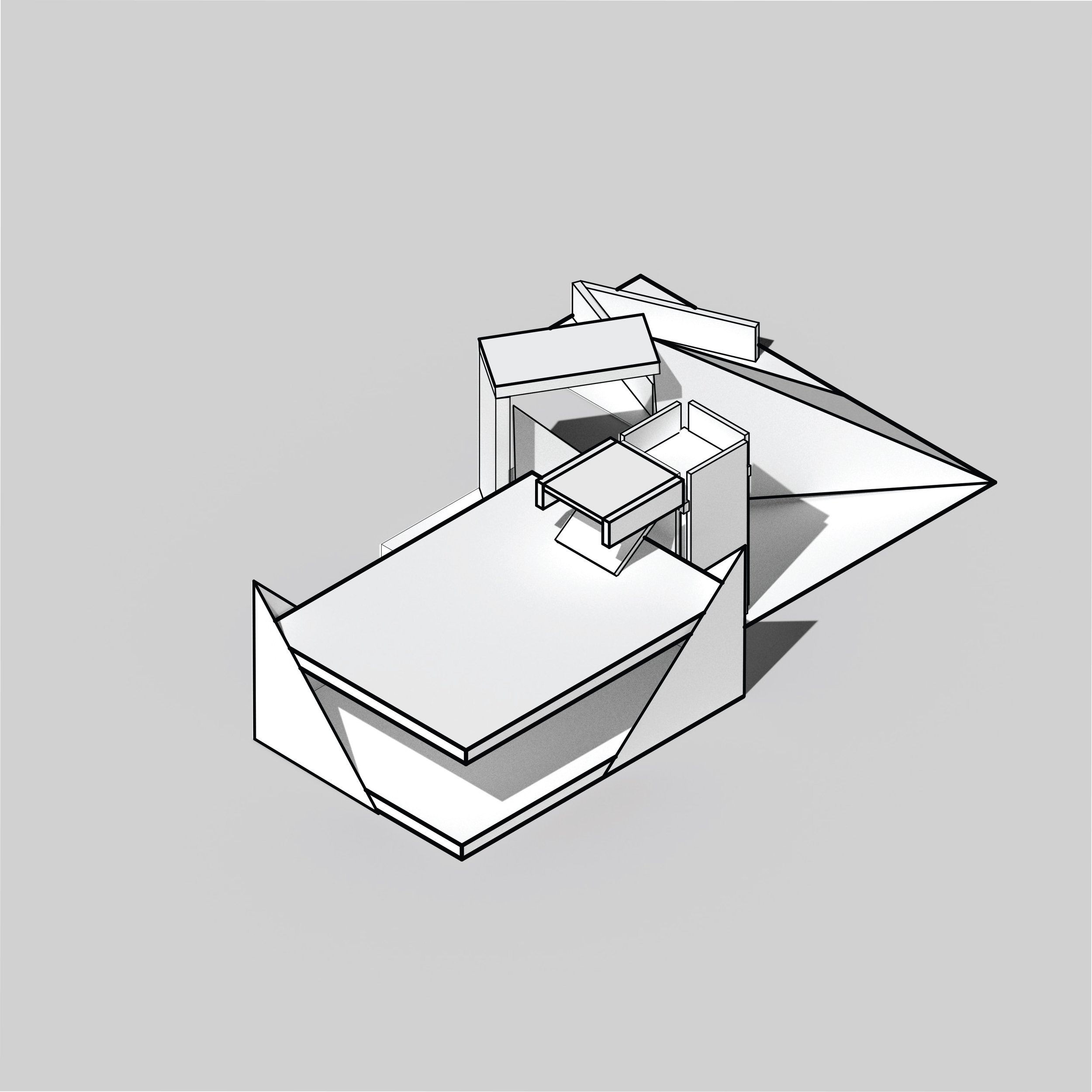
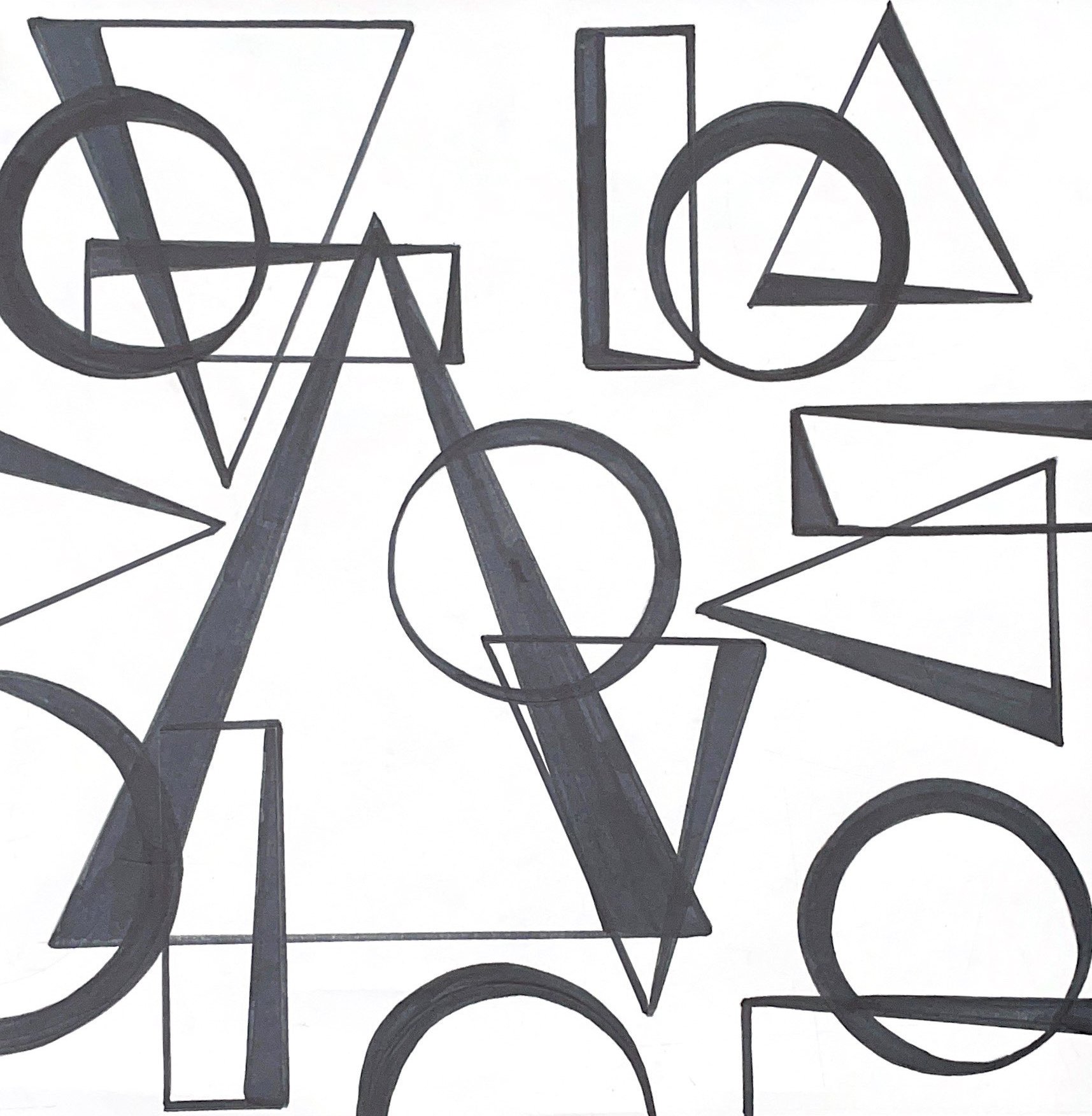
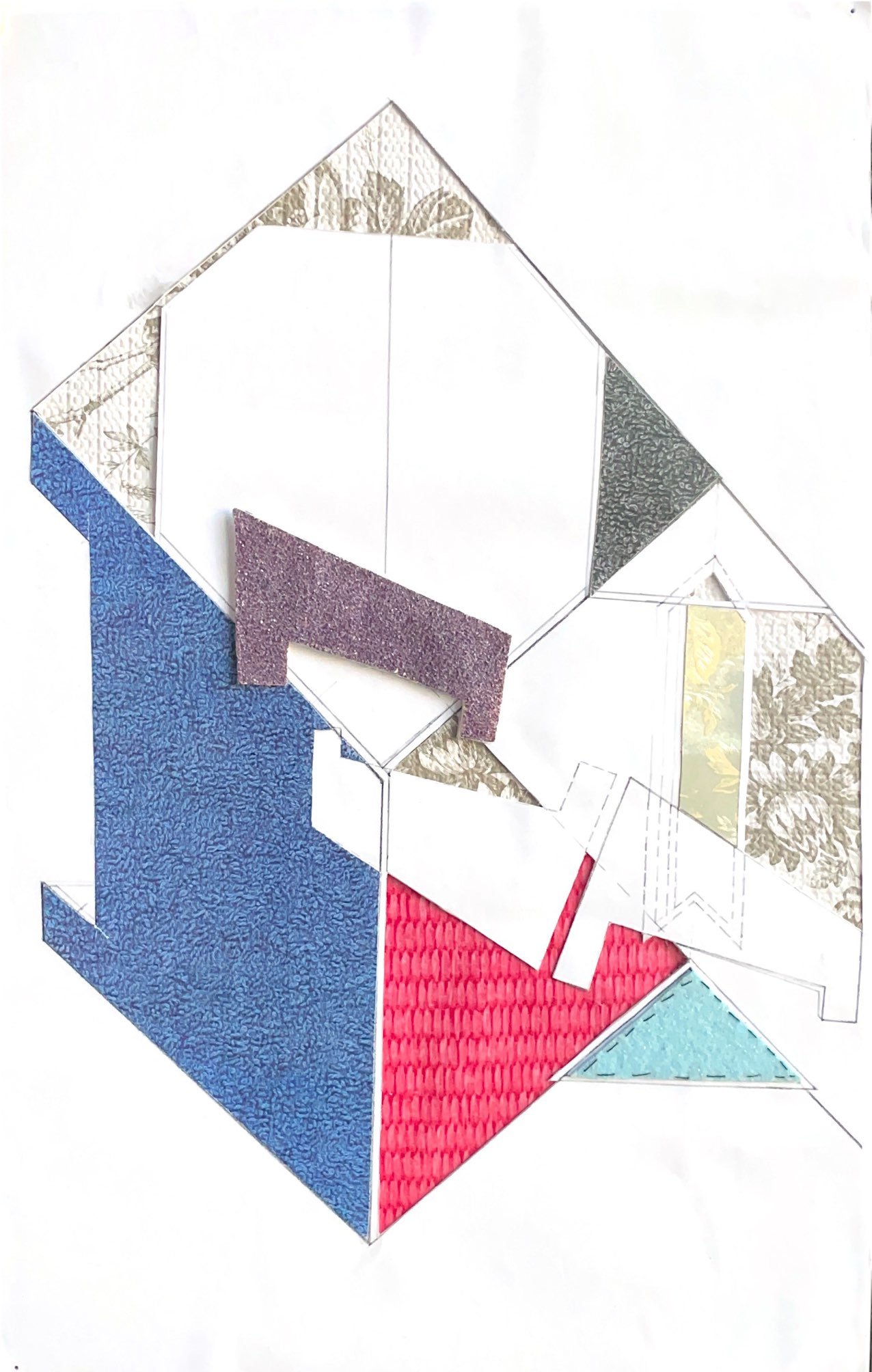
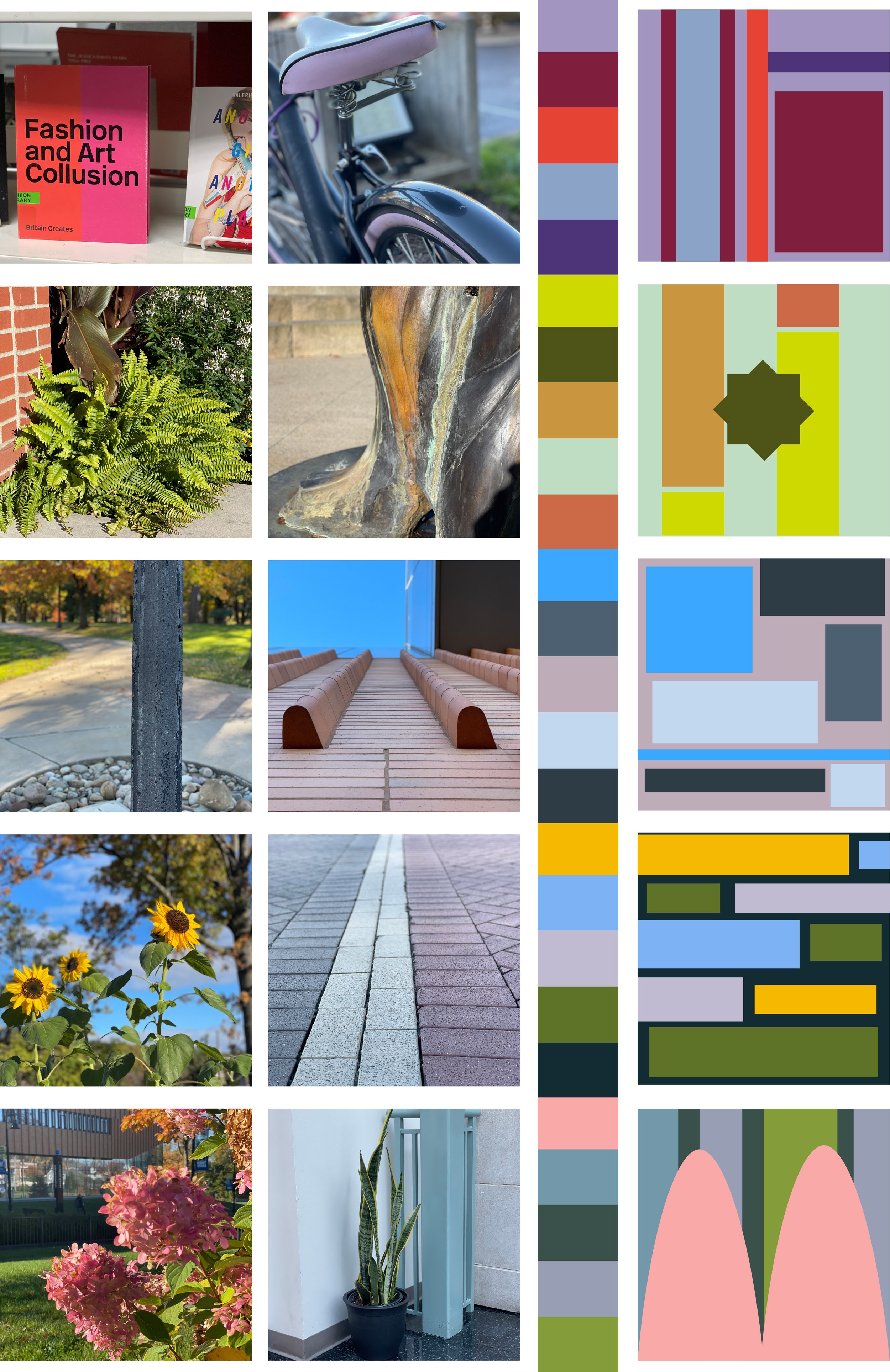
Gabby Volz
Various Works
Design Principles in 2D & 3D: An introductory basis to interior design, we practiced the use of line work along with perspective in drawing and sketching.
Pattern & Texture: Beginning with photos taken around campus, we defined certain aspects and refined them in order to create final models representing patterns. Throughout the process we used various techniques to explore texture along with pattern making.
Color & Color Relationships: We investigated numerous aspects of color through its principles and how it interacts under different circumstances.
Placemaking for Chess Pieces: After researching the history of chess and its rules as a game along with other features, we created chess boards. Ultimately, we took our boards and discovered the characteristics of each piece, thus making an interior space based on one specifically.
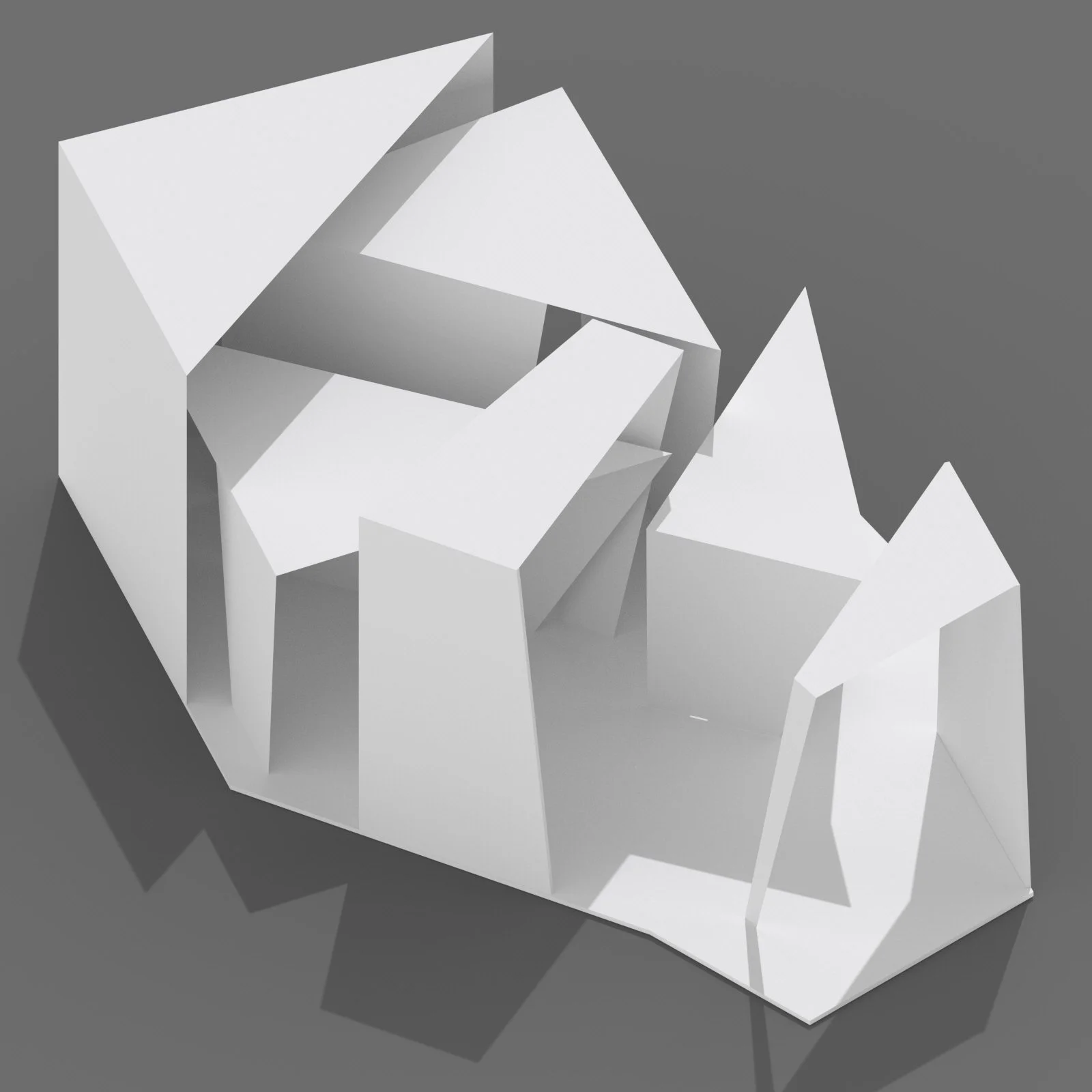
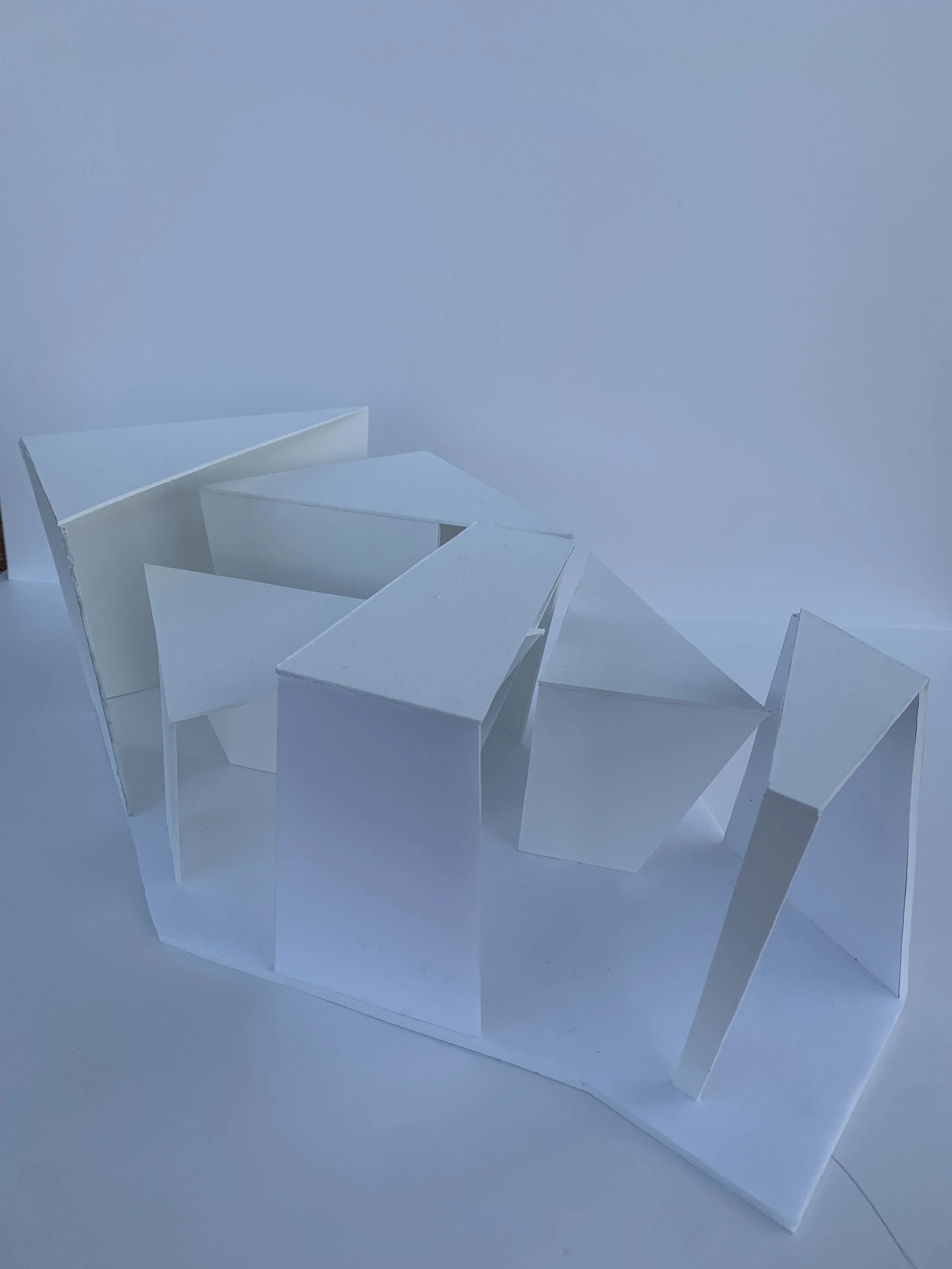
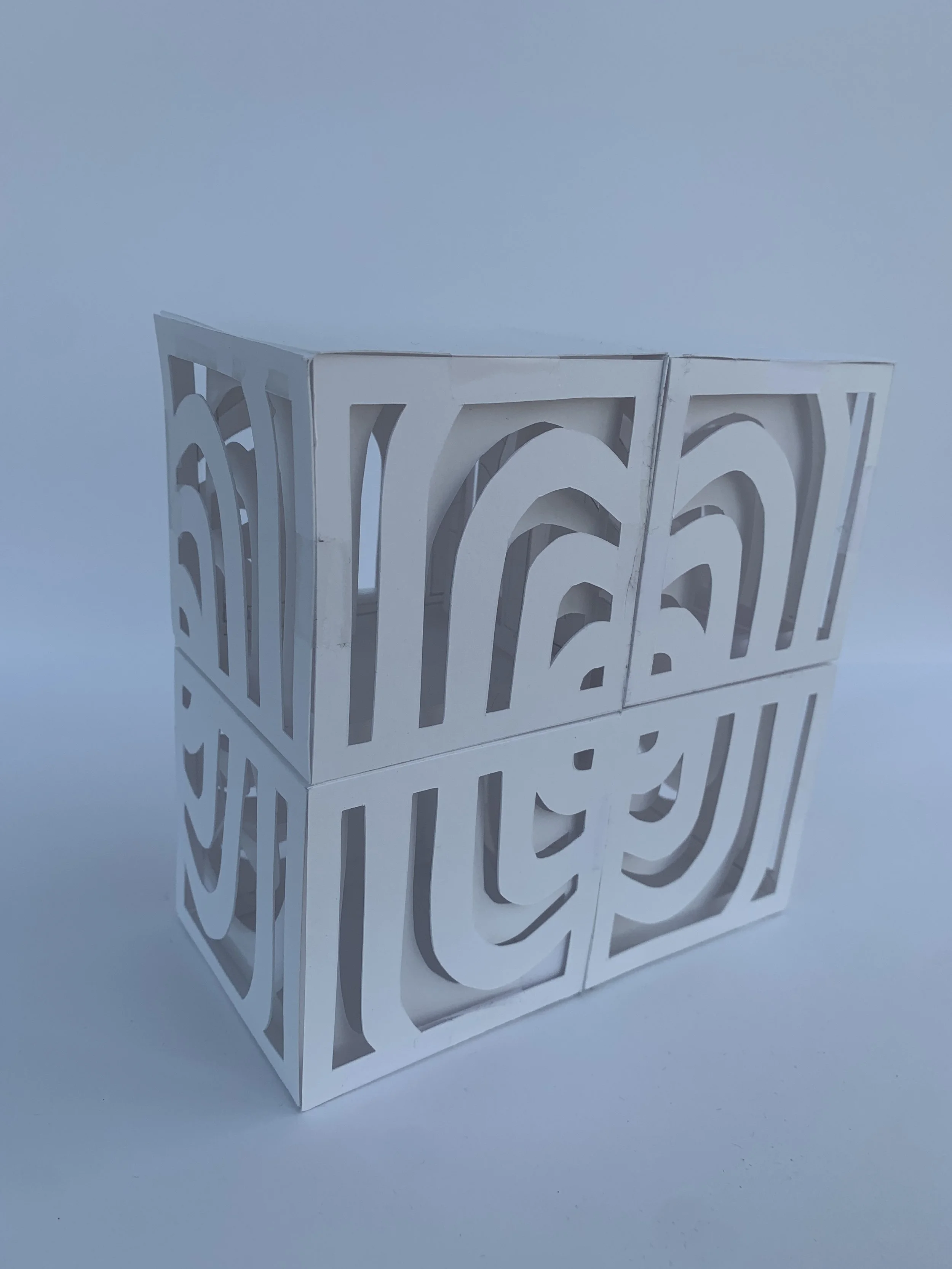
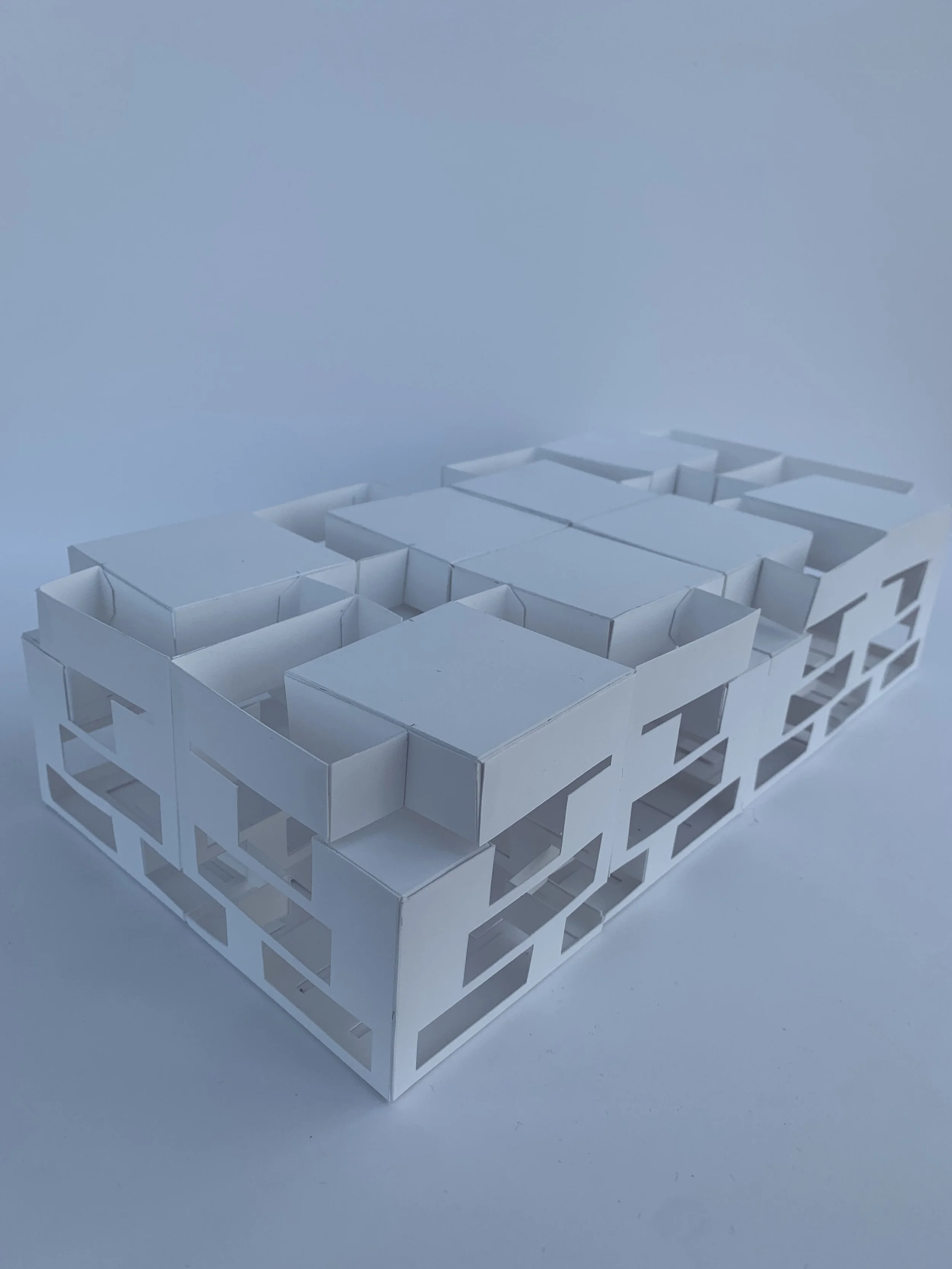
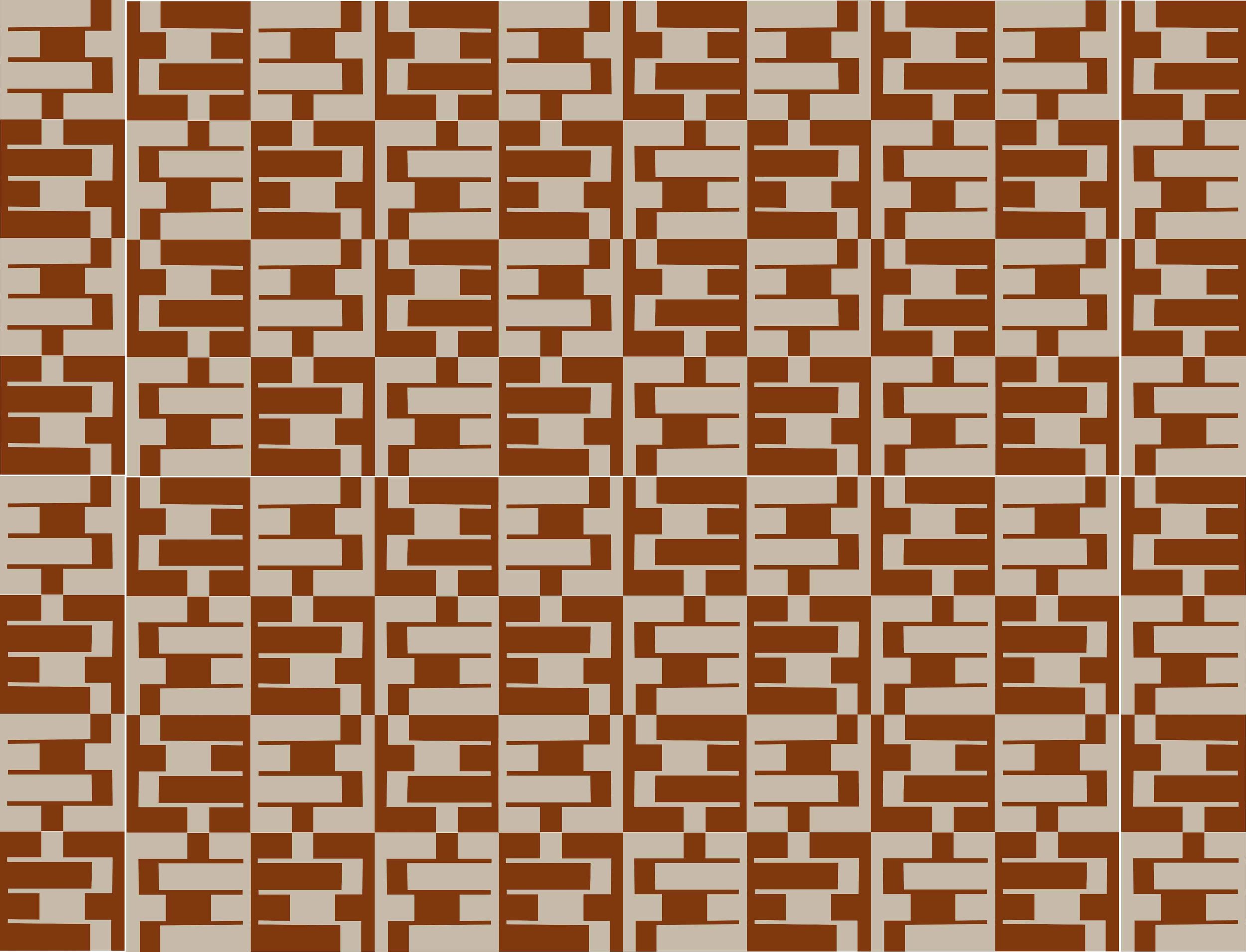
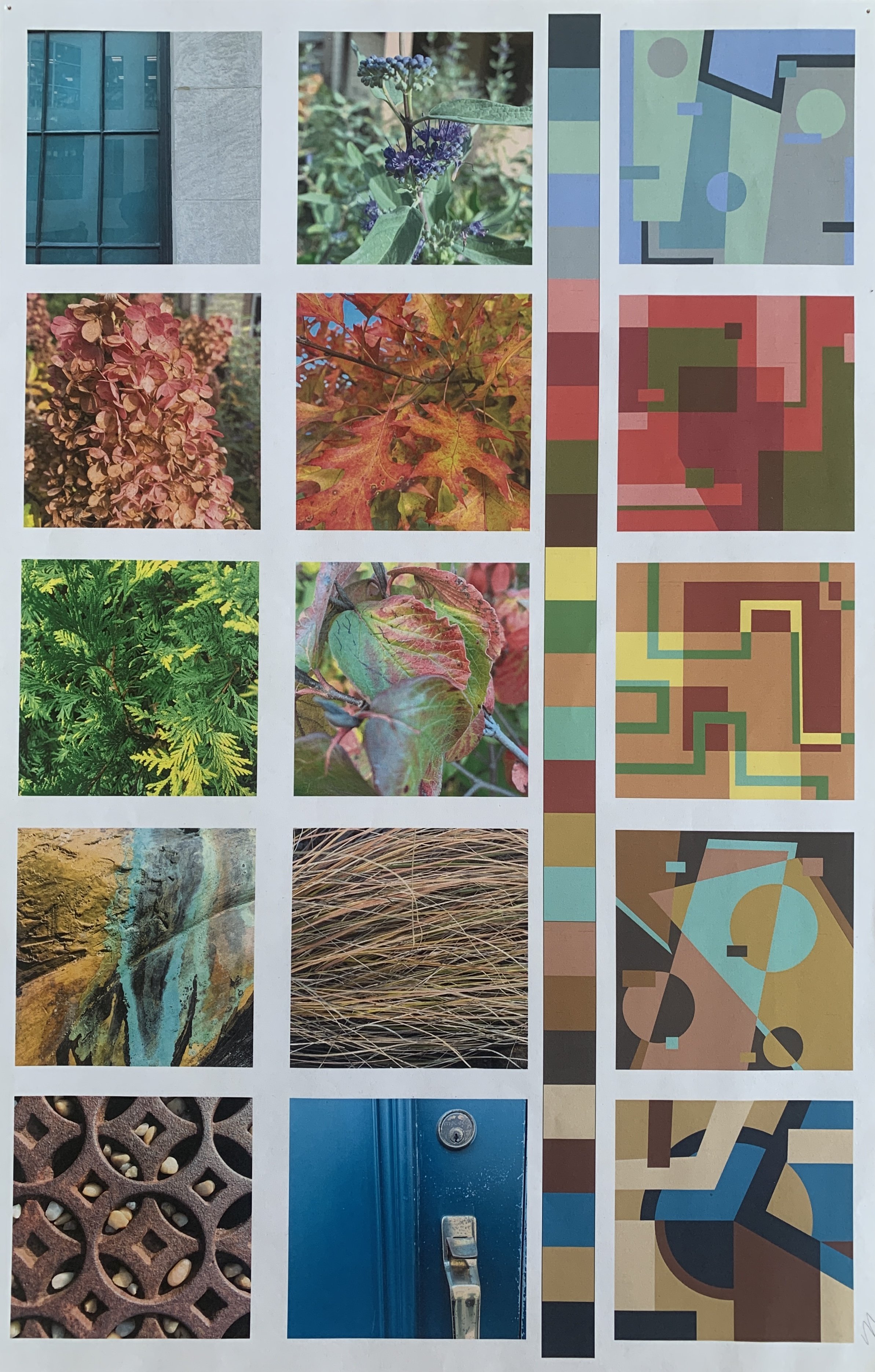
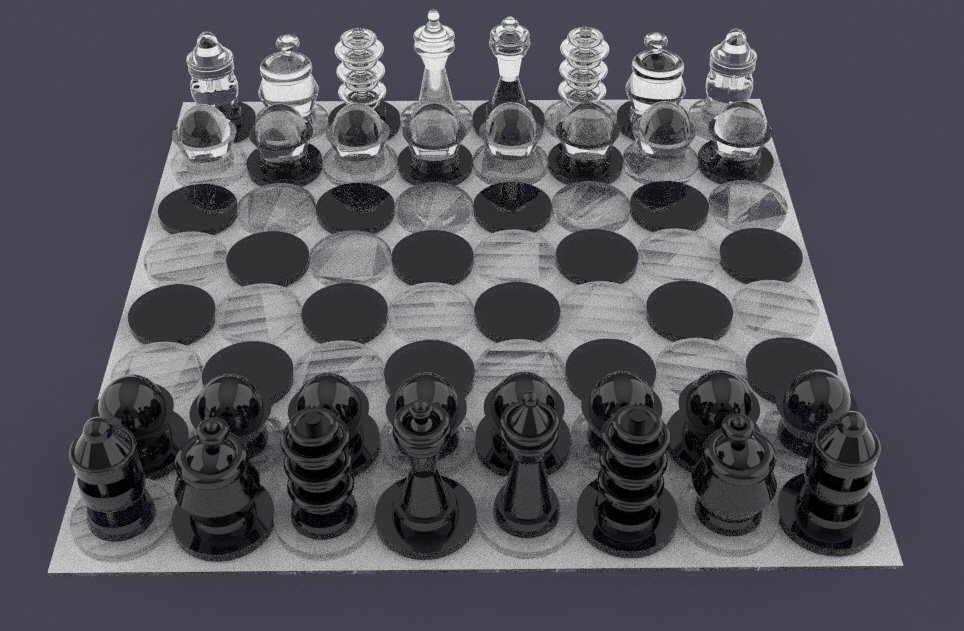
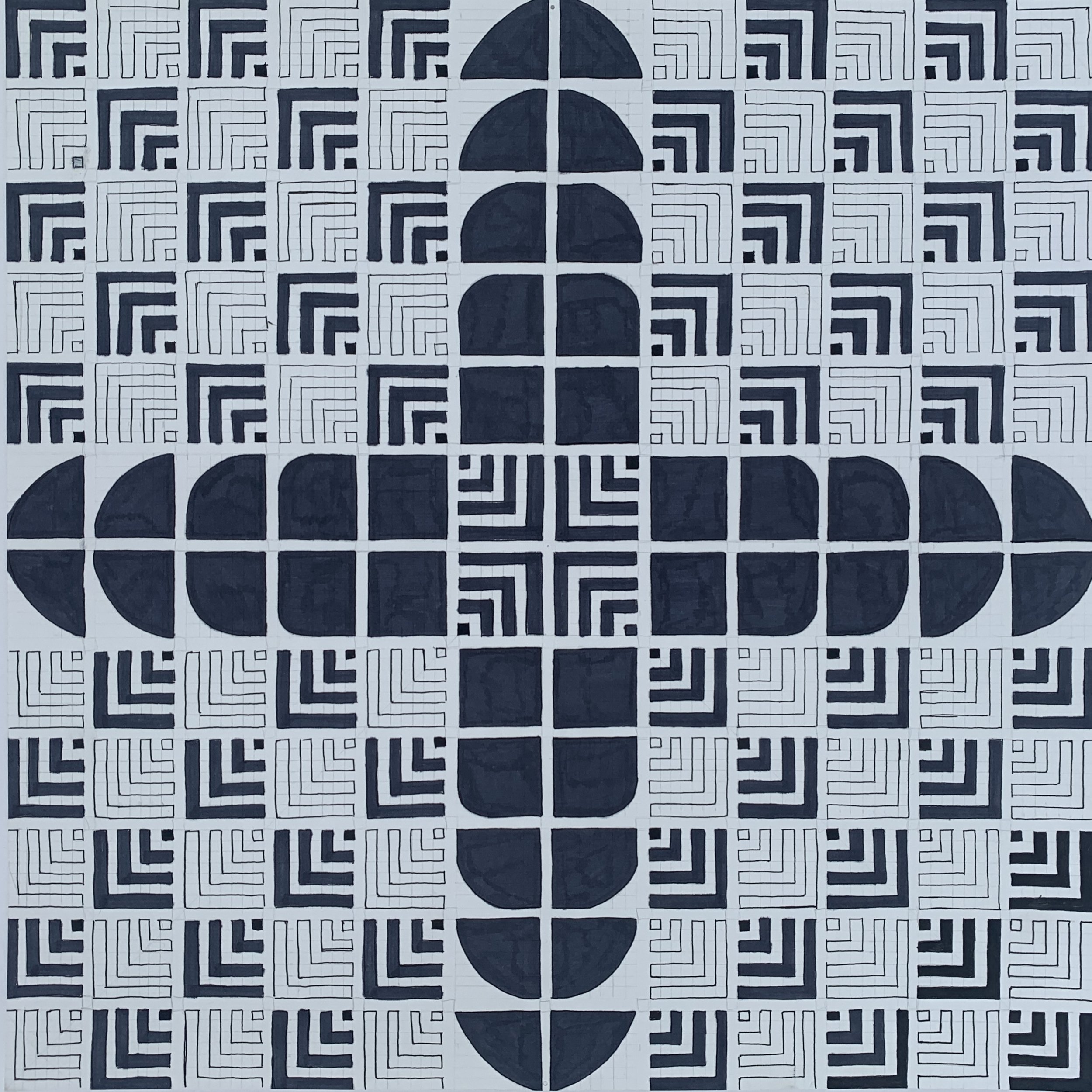
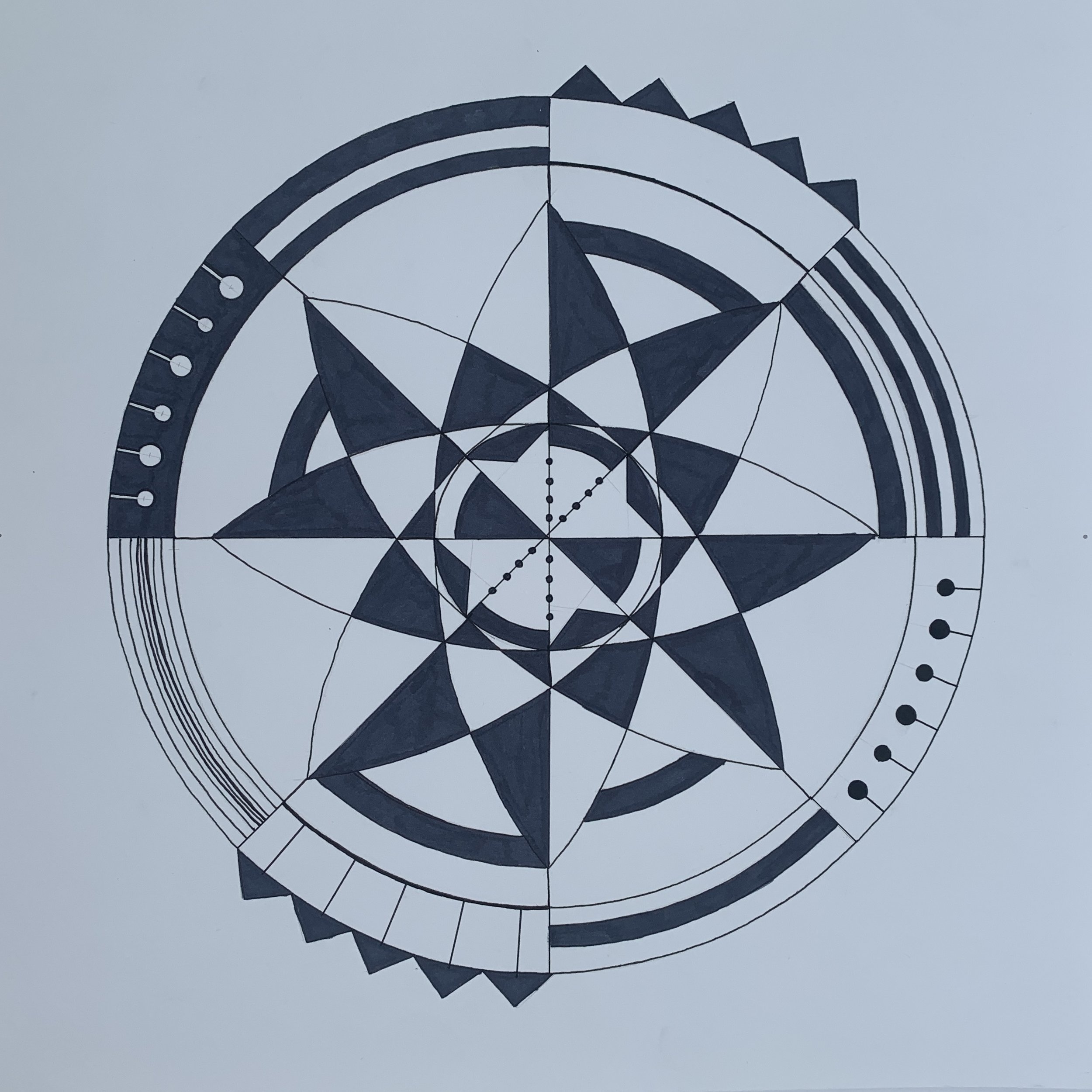
ID Foundation Studio | Professor Jakecia Durham
ID Foundations Studio is an introduction to design fundamentals including principles of visual organization and composition in both two-dimensions and three-dimensions. The course is oriented to foundational design principles shared between various allied design disciplines including architecture, fashion, and visual communication design. Special emphasis is placed on design fundamentals especially relevant to interior design. The course introduces two-dimensional and three-dimensional hand craft and digital skills. Specific content of the studio included visual organizational, including formal compositional principles; an application of representational conventions in building design and basic drawing techniques including sketching and freehand drawing, orthographic projection, isometric and parallel projection, diagramming, and three-dimensional modeling techniques; acquiring of hand craft in drawing and modeling and well as the application of digital techniques that include software applications used in interior design; applying design thinking to studio problems including conceptualizing, developing design solutions, understanding techniques of iteration and revision, responding to design criticism from others, and evolving a sense of personal creative autonomy and self-criticism.
The studio completed four exercises:
Design principles in 2D & 3D
Pattern & texture
Color & color relationships
Placemaking for chess pieces
Mary Rumsey
The Art and Design of Chess
This project was inspired by the game of chess and the connections between art and design. Starting with research was important to understand the game of chess and see connections between the overall topic and chess. Using various sketching methods it was possible to create chess pieces that related to the overall topic of the project. The assignment also included creating a 3D model that showed the movement of two chess pieces to create a space. The space was sketched out to make a digital model and then a 3D model was created. When designing each section of the project each part was related back to the overall topic chosen at the start of the final project.
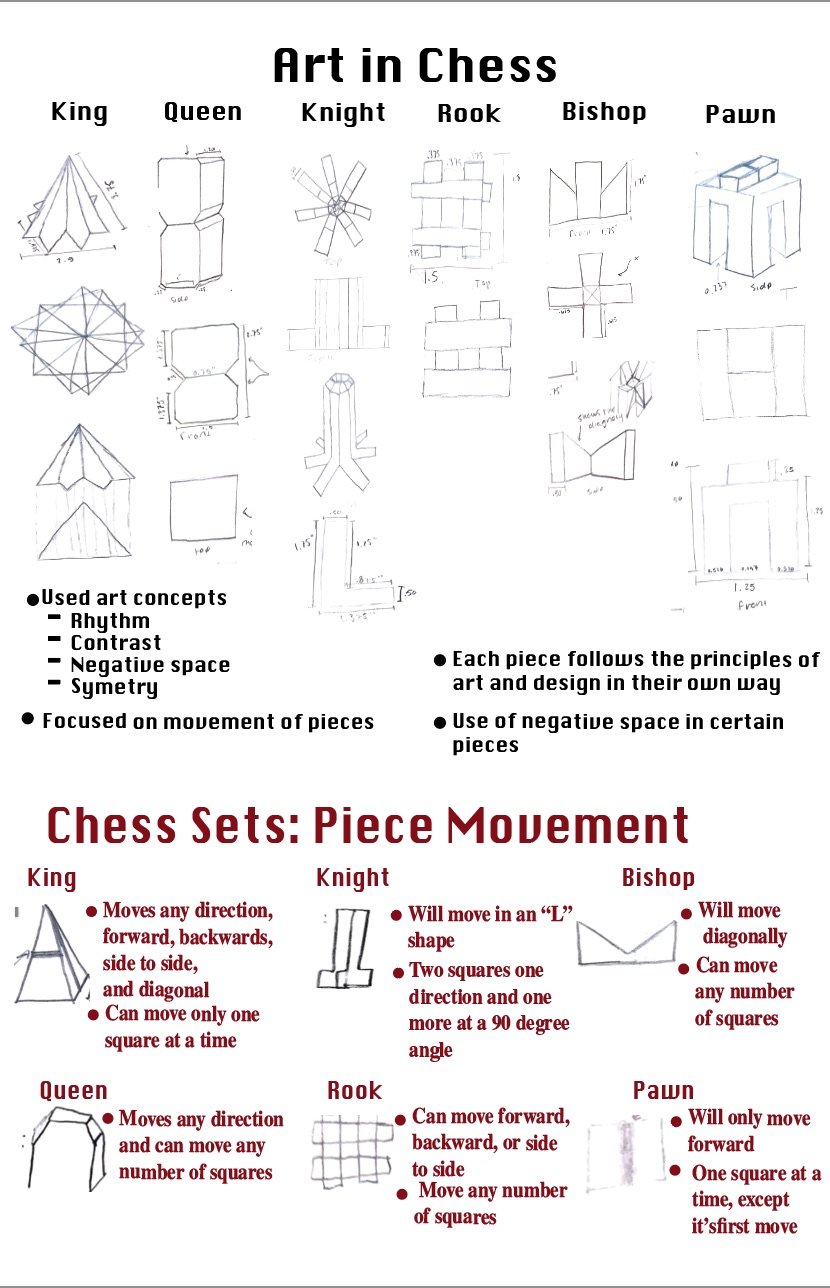
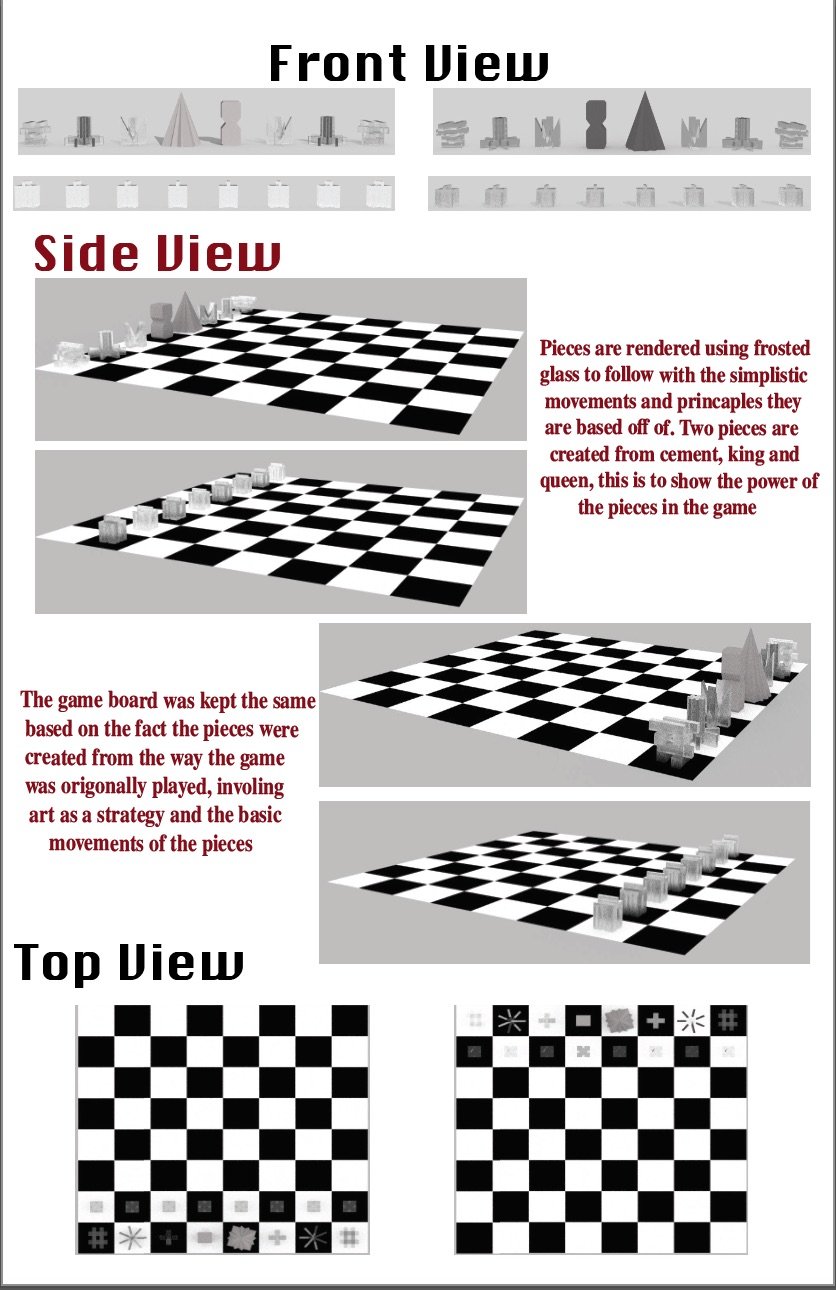
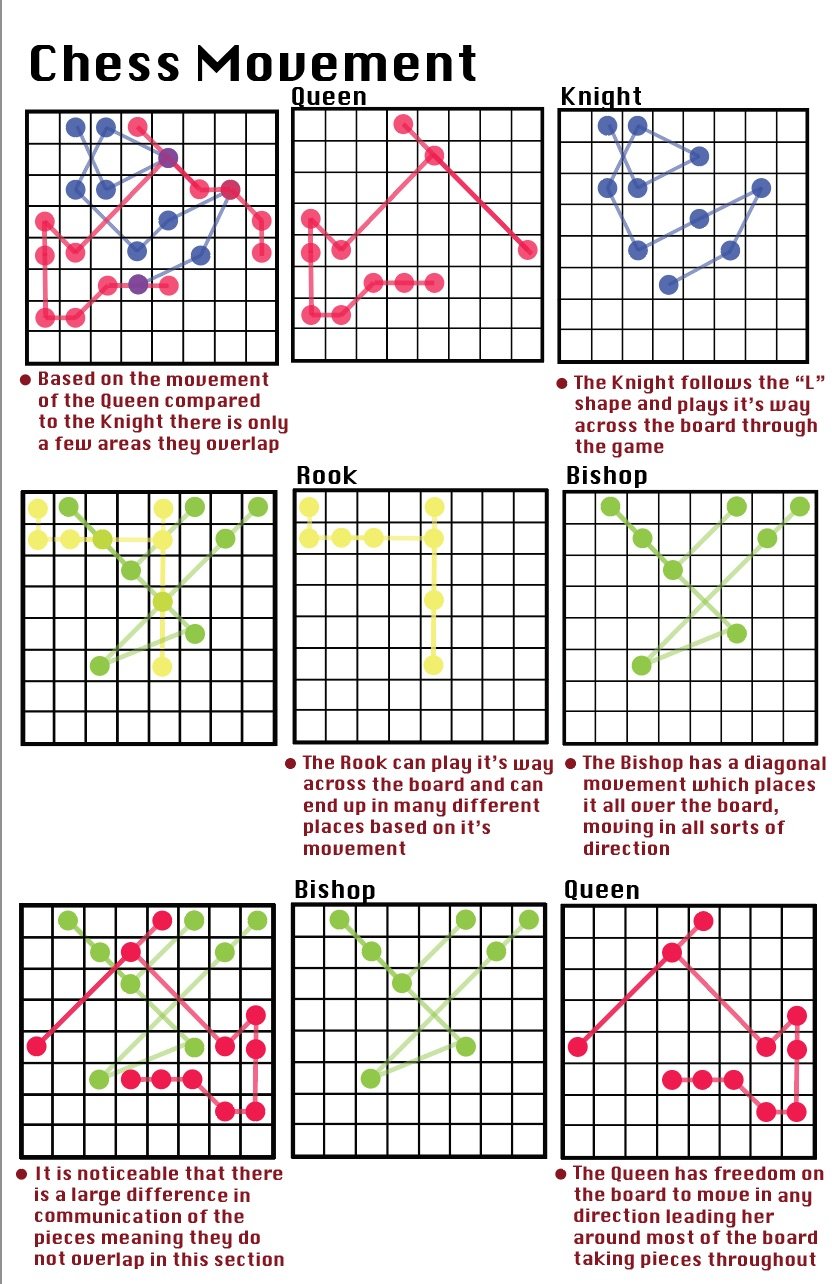
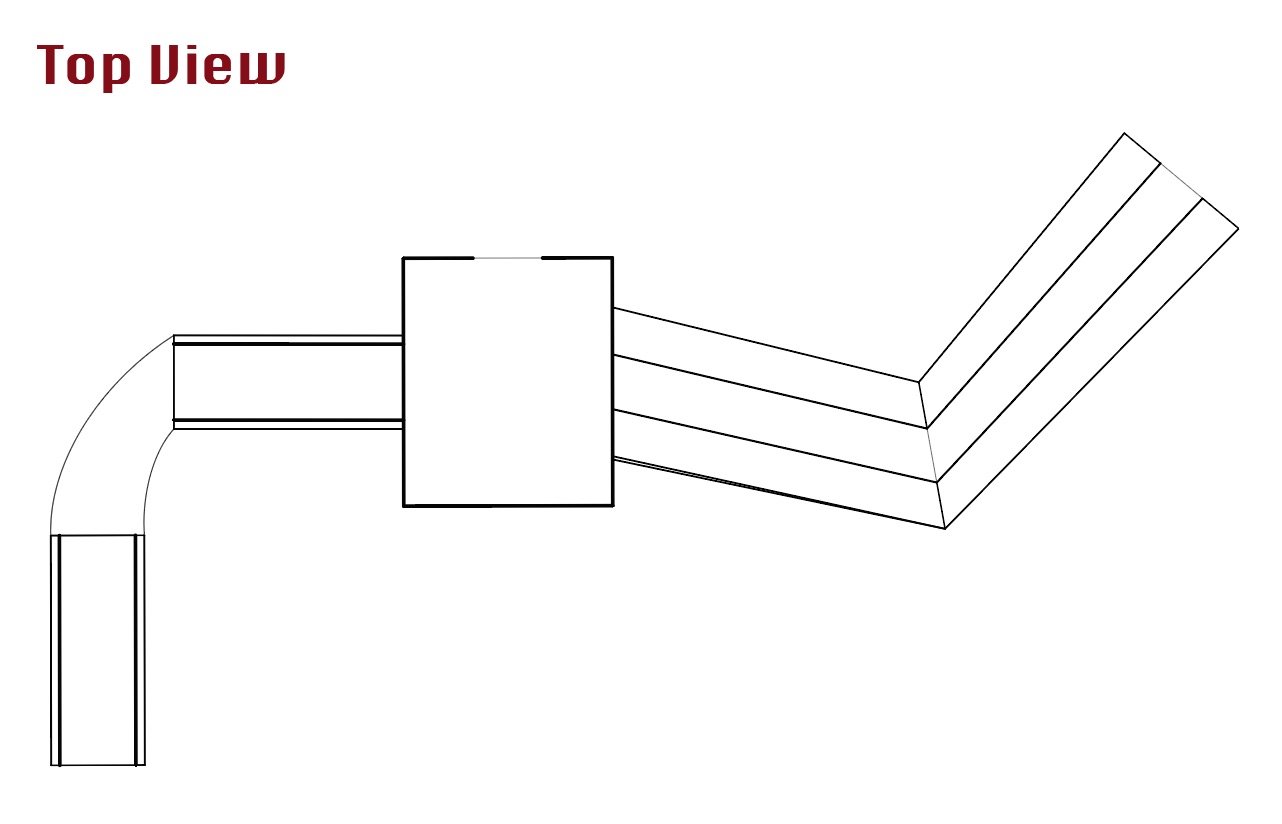
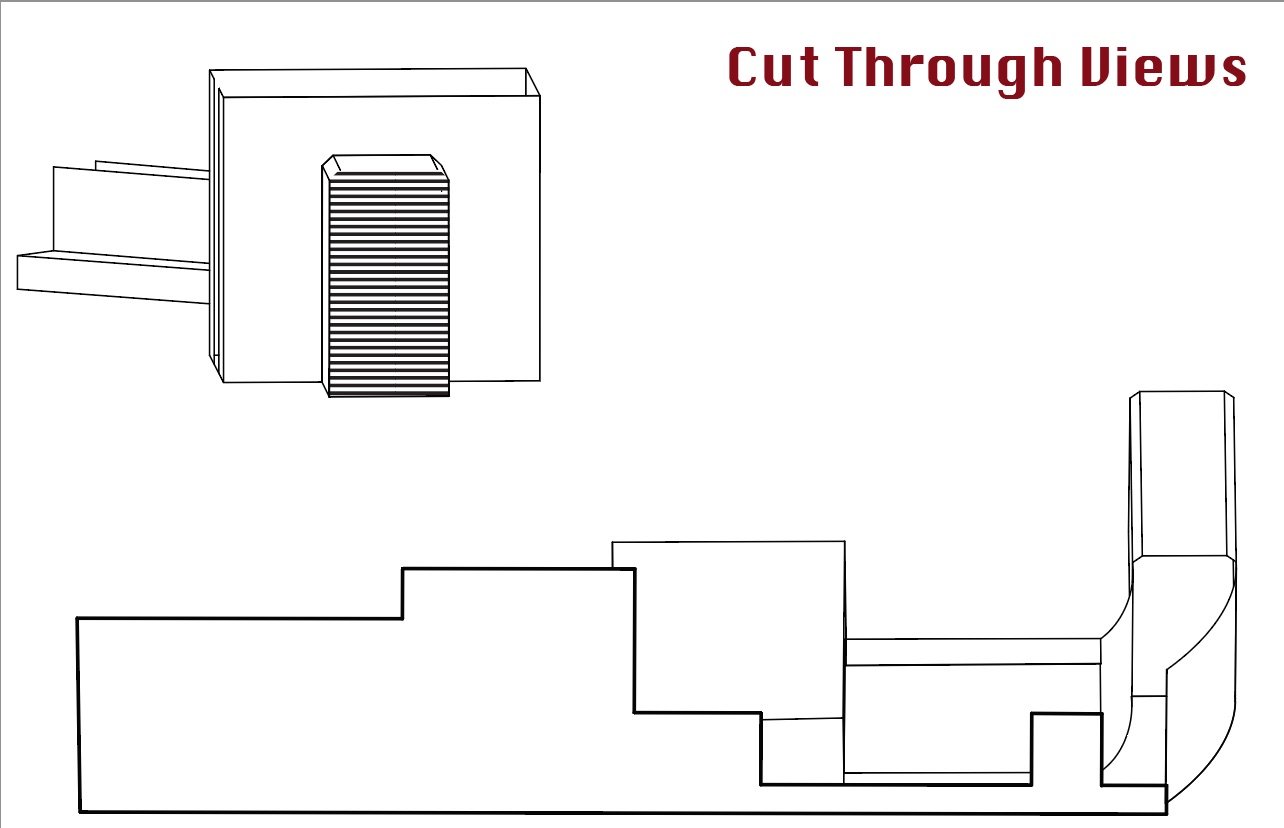
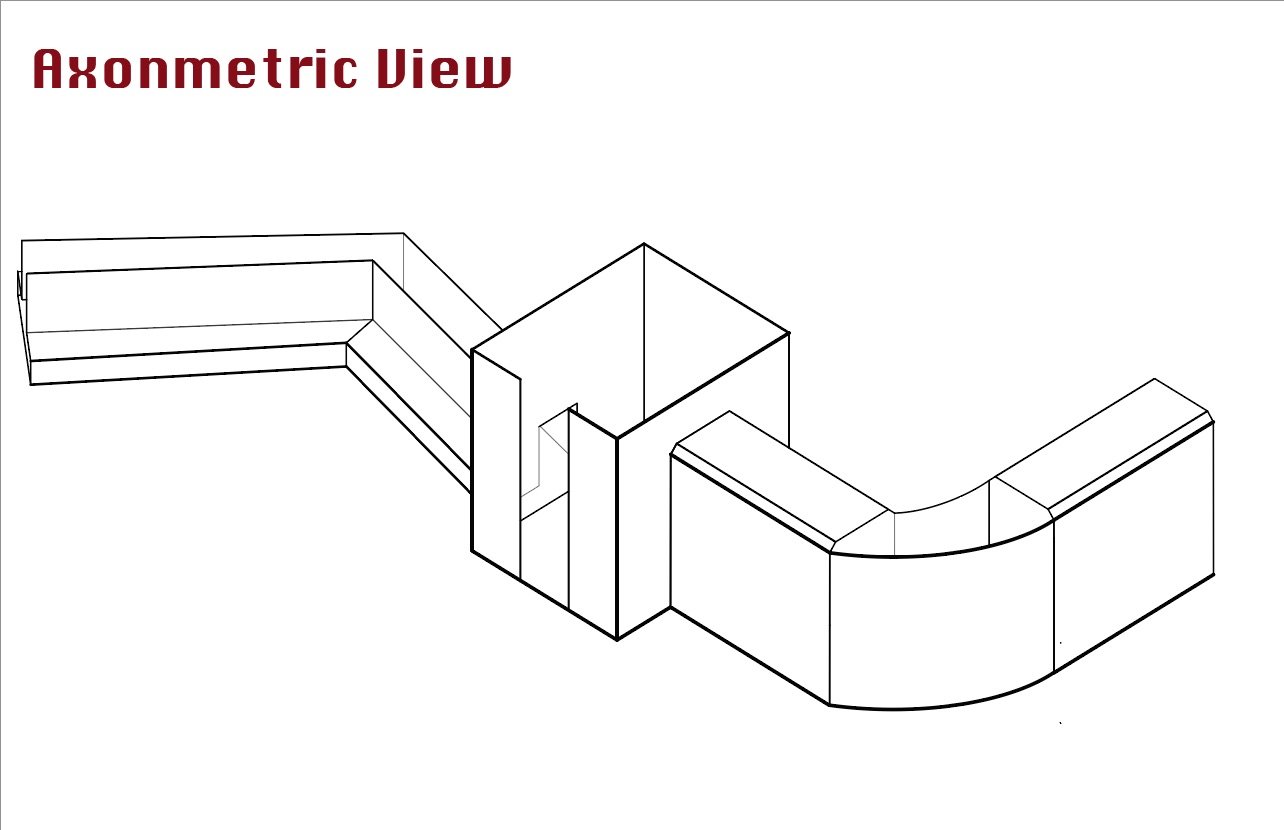
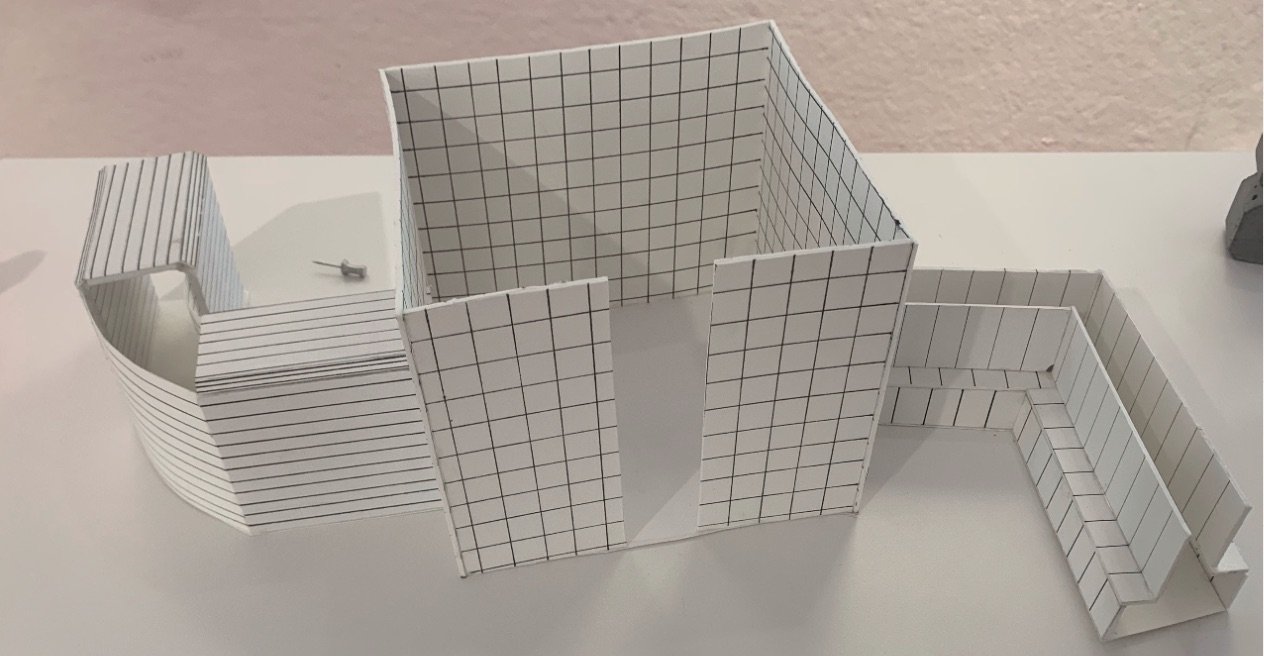

ID Foundation Studio | Professor Maxwell Hentosh
1. Exercise 2.5: 2D pattern units projected into 3D patterns of space and form.
2- Exercise 2.6: Reversing 3D into an axonometric drawing.
3- Exercise 4.3: Designing and modeling your own chess pieces
Jasper Tamang
1- 8 3D cubes combined making one full cube, made with 2 pictures including patterns of space and form.
2- Axonometric drawing of a single cube, from the full cube.
3- Laser-cut chess pieces, layers glued together.
